|
Movies we've seen © 2004-2013 by John Varley; all rights reserved |
P-Q
|
The Pacific (2010) In 2001 HBO aired “Band of Brothers,” which followed Easy Company of the 101st Airborne Division from basic training through the D-Day invasion of Operation Overlord, up until VE-Day. Until that time it was the most expensive television series ever. This is a follow-up with the Marines in the Pacific. I wouldn’t dream of belittling any serviceman or woman’s wartime experience. All of them had their particular horrors. We saw what the Army went through in Europe. With the Navy it was kamikazes and submarines—or for submariners, depth charges. With the Air Force it was aerial combat, fighter attacks on bombers, and flak from the ground. But I believe that no one had it harder, and for longer, than the Marines. The hardships these men endured are almost impossible to describe. This series shows it in all its brutality. We had never fought a foe like Imperial Japan, whose soldiers never surrendered, who were capable of brutality we can scarcely imagine. On Okinawa, they used civilians as human shields, and that was the least of it. (To this day, there is vigorous denial of this in Japan, to the intense anger of Okinawans. ) The things these men faced are shown in terrible detail here, and what might even be worse, the things they were forced to do, to the point that many of them became desensitized, just didn’t care anymore. I like it that Episode Ten deals with the return to America. As far back as The Best Years of Our Lives movies have shown how hard it can be for a soldier to come home from war. Coming Home was much more graphic about it. But historically, most war pictures have emphasized the fearless heroism of our troops, up until fairly recently. And heroism there was, but precious little fearlessness, even among the toughest Marines. Only the insane were fearless on Iwo Jima, Tarawa, Peleliu, and Guadalcanal. What is most powerful about this series is that it pulls no punches. There were horrible wounds suffered, physically, but some of the worst wounds were mental, and haven’t healed to this day. Each episode is introduced by veteran Marines, men now in their eighties, who say they still relive it all. Not only the shelling, the bombs, the suicide charges, the malaria, the mud, the heat, but the eventual reduction of their humanity to the point that they thought nothing of firing into huts that probably only held civilians … but might have soldiers, too. Fuck it, better safe than sorry. I came here to kill Japs, didn’t I? And haven’t they been trying to kill me? And it broke many of these American men, far more than is commonly known. Here’s some figures from Wiki: 62,000 American casualties, 12,000 killed or missing. (Several thousand died later of their wounds.) There were 48,000 cases of “combat stress reaction,” 48% of the troops who fought there. 14,000 soldiers were “retired due to nervous breakdown.” I guess George Patton would have hated these men, would have thought they were cowardly pussies, since there was “no such thing as combat fatigue.” He would have been kept busy a long time, slapping them all. Here’s a list of episodes: 1. Robert Leckie and the 1st Marines land on Guadalcanal and take part in the Battle of the Tenaru. 2. John Basilone and the 7th Marines land on Guadalcanal to bolster the defenses around Henderson Field. 3. The 1st Marine Division on Guadalcanal is relieved and arrives in Melbourne, Australia. Basilone receives the Medal of Honor and is sent home to sell war bonds. 4. Eugene Sledge enlists in the Marines and trains for combat, while Leckie and the 1st Marine Division are put into action at Cape Gloucester. Leckie is treated for nocturnal enuresis. Translation: He’s so stressed, he’s pissing the bed. 5. Sledge and Leckie land with the 1st Marine Division at Peleliu. 6. The Marines move to capture Peleliu's vital airfield. Leckie is wounded by blast concussion and evacuated. 7. Sledge and the 5th Marines move into Peleliu's Bloody Nose Ridge to face the Japanese. 8. Basilone is transferred to the 5th Marine Division and lands at Iwo Jima. 9. Sledge and the 1st Marine Division land at Okinawa. 10. Sledge and Leckie return home after the Japanese surrender. IMDb.com The Pacifier (2005) This was the second feature at the drive in; the first was Fever Pitch. What we got was a film-school double feature: How to write comedy, and how not to write comedy. This is one that’s so bad it should have joined that small, elite selection of movies that are put on the shelf, never released. Vin Diesel tries something that The Governator (Kindergarten Cop), Sly Stallone (Stop! Or My Mom Will Shoot), and (what the hell were you thinking!) Tommy Lee Jones have tried: playing against the tough-guy type. It can be a funny idea, but you have to have people you care about in some way. Everyone in this is just awful. For some reason, in pursuit of some pointless McGuffin, Vin the Navy Seal is assigned to protect five children. He ends up covered in shit, figuratively and literally. We lasted 40 minutes, but could easily have left in 20. It SUCKED! IMDb.com Le pacte du silence (The Pact of Silence) (France, 2003) Gérard Depardieu is a priest/doctor in Brazil, trying to treat a nun who is having all sorts of problems. It’s tough, because the order forbids taking any kind of medicine. He learns she has a twin sister, both played by Élodie Bouchez. He goes back to France and learns that the sister is in jail for suffocating an infant when she was twelve. Then it starts to get weird. Separated by thousands of miles, the twins seem have something called symmetry, where each suffers from whatever the other is suffering. The other twin is paroled, and the priest falls in love with her. They return to Brazil. (There’s a lot of other things going on that I won’t get into.) Now, I was pretty sure early on that the twin in jail didn’t kill the child, but I wondered why she was serving the time. Apparently she confessed to it. But the upshot of all this is that the twins get together, the priest learns who really killed the child, and why one went to prison and the other into a convent. Then one of the twins grabs the other and they fall off a three-story roof. One is on the bottom, and dies, one is on the top, and lives. But which one? We see a few years on, when the priest and the survivor are raising a family, so the priest, at least, is happy with the one he has. Lee and I discussed it, and concluded there was no way to tell for sure who lived and who died. And I think that was the intention of the writer and director. Does it matter? Not to the priest, it seems, and I think he himself may not be sure which one he married. It’s a conundrum, and in the end not very satisfying as a story. IMDb.com El Padrecito (1964) The only previous time I’ve seen Cantinflas (real name: Mario Alfonso Moreno Reyes) in a movie was in Around the World in 80 Days, his first English-language film, for which he won a Golden Globe Award. He only made two more in English: Pepe, a giant musical which flopped, and The Great Sex War, which is forgotten (and with good reason, I hear). I thought he was delightful in ATWI80D. (Trivia: The director of that giant, Best Picture of 1957 extravaganza, was Michael Anderson, who also helmed—as we say in Tinseltown—my own giant flop, Millennium. Michael is a very sweet man who had a lot of funny stories to tell about the madman who produced ATWI80D, Michael Todd. I wish I could remember more of them.) All Cantinflas’s other films, like this one, are in Spanish. I’ve been curious about him for some time. Chaplin called him “the greatest comedian in the world,” and the world echoed the compliment by calling him “the Mexican Chaplin.” He may still be the most admired film actor in his native Mexico, even with the recent onslaught of big-name Mexican and Mexican-American stars. So what was the deal with him? I resisted both Chaplin himself and Jacque Tati, the French Chaplin, until I actually saw some of their movies, and then I adored them both. I was hoping the same thing would happen with Cantinflas. It didn’t. Sad to say, it didn’t. We paused this film halfway through, agreed that neither of us had laughed at all, and beyond that, the story was dull and totally predictable and dismally-produced, and then gave it up. This upset me, and I tried to find out why. It turned out to be not all that hard to discover the reason he and I didn’t connect. It’s been suggested that a better American performer to compare him with would be Groucho Marx, with his insane verbal humor. Chaplin was a world-wide idol because his success came during the silent era, when no knowledge of English was needed; the title cards served largely to move the plot along, and didn’t have to be very funny. (A good thing, because most of them were pretty lame.) His humor was not necessarily slapstick—though he was second only to Buster Keaton at that—but it was always visual. You didn’t need any sounds, any words, at all. Cantinflas used verbal humor almost exclusively. To quote from the Wiki article: “Among the things that endeared him to his public was his comic use of language in his films; his characters (all of which were really variations of the main "Cantinflas" persona but cast in different social roles and circumstances) would strike up a normal conversation and then complicate it to the point where no one understood what they were talking about. The Cantinflas character was particularly adept at obfuscating the conversation when he owed somebody money, was courting an attractive young woman, or was trying to talk his way out of trouble with authorities, whom he managed to humiliate without their even being able to tell.” Doesn’t this sound more like Groucho to you? All through the first part of El Padrecito there were these long stretches of monologue from Cantinflas, and then the person he was talking to would say “I have no idea what you’re talking about.” Whew! Neither did I, but I was glad to hear the other guy say it. The sad fact is, satire, puns, wordplay, poetry … all these things can be translated from one language to another only by a genius. What comes to mind is Cyrano de Bergerac, an 1897 play in French by Edmond Rostand that is dense in wordplay. It was translated wonderfully into English by Brian Hooker. I will never know just how wonderfully because I don’t know French, but what I do know is that it worked, it was simply crammed with puns and jokes and such, in English. This is the version José Ferrer won the Oscar for in 1950. (Steve Martin did a less successful adaptation as Roxanne in 1987.) And this movie simply doesn’t work, and the reason is that the subtitles can’t convey the (I’ll postulate) richness of the Spanish verbal by-play. Usually when I watch a film in a foreign language I pretty much tune out the dialogue, except for listening for emotional nuances. I just read the titles. What good is it going to do me to listen to Chinese, or Czech, or Polish? I don’t know a word, a syllable, in those languages. But in French and Spanish I listen, because I do know a few words. I’ll see an English word in the titles, and then listen for the Spanish equivalent, and often can hear it. Pretty primitive, and I doubt I’ll ever learn Spanish that way, as I’m led to believe some children learn to speak English. But I was actually listening, and from time to time I’d detect something, as in one passage when I realized that the end word of each sentence Cantinflas was saying rhymed with the end of the previous sentence. I then figured out that some pretty cute punning must be going on here, because there were a dozen lines like that. And at the end of the long, rambling speech the priest Cantinflas was talking to looked puzzled, and admitted he hadn’t understood a word of it. Neither had I, but the tragedy was that the translator, though he may have understood it all, was incapable of making similar puns in English. I got gibberish, as did the priest, but for it to work it had to be funny gibberish, and this wasn’t funny. And sadly, a time or two I got proof that the translator was actually trying, as when there would be a pun in English, and I found myself wondering, do those two words constitute a pun in Spanish? I doubt it, which means the translator had done some fancy footwork to find an alternate way of getting the joke across. Perhaps some English-speakers will be able to find Cantinflas funny—though his humor never really crossed the Rio Grande, except among Mexican-Americans—but I am unable to. And it’s really sad, because he is the little Mexican everyman underdog who defeats the establishment, and I want to like him. IMDb.com Painted Lady (1997) We watched this on the strength of Helen Mirren being in it, and her performance, as usual, was outstanding. She’s a washed-up folk singer, used to be famous, now she’s staying in the guest cottage of a wealthy friend. The friend is murdered, and a very expensive painting is taken. She sets out into the art scene to find out what really happened, and to avenge her friend. The plot is complex and I’m not sure I understood it all, but it didn’t make a great deal of difference. I enjoyed it. It seems there are some scenes that are posed to imitate famous paintings. The only one I spotted was the Death of Marat, with the famous and tortured French revolutionary dead in his bathtub. If you know more art than I do, you’ll probably see more. IMDb.com The Painted Veil (2006) Shot on location in China, in that river valley in Guangxi that looks so gorgeous it might have been computer-generated for a fantasy film. The year is 1925, a turbulent time in China (though, come to think of it, has there ever been a time in China when it was not turbulent?), and a cholera epidemic is raging in the hinterlands while various political factions and warlords are beginning to have some success in expelling the western devils who have sucked the country dry for centuries. This is a good movie, but not remarkable. You sometimes wonder why a particular movie was made, and might suspect it was because the stars fancied a vacation in China, or a tropical island. This isn’t quite like that, but still, they couldn’t have thought there was a huge audience for this. I do want to mention Toby Jones, though. We saw him in Elizabeth I, with Helen Mirren, and were impressed. He played Robert Cecil, and was outstanding. He’s a funny-looking little gnome, doomed to character parts, I suspect—though he did star as Truman Capote in Infamous, and the only reason I haven’t seen that one is that I’m dreadfully tired of Truman Capote. I mean, how many movies have they made about the little shit? But I might suck it up and see it just for Toby Jones. In The Painted Veil, he takes a part that could have been nothing and makes it memorable, quietly, sneaking up on you with his unexpected humanity. IMDb.com The Paleface (1922) Buster Keaton two-reeler. Not one of Buster’s best. Aside from the racial stereotyping which isn’t really funny any more (though not horribly offensive, either), there’s just not a lot of comic invention. This is available on a DVD with the feature Go West. IMDb.com The Palm Beach Story (1942) Not one of Preston Sturges’s best, in my opinion. It’s a bit hard to get up a lot of sympathy for the Claudette Colbert character, who spends most of the movie scheming to get rich. It’s all for hubby, who she insists she is divorcing, of course, and we all know they’ll get back together, but her change of heart is unconvincing. The middle section of the story is very annoying, with a dozen stupid-drunk rich guys on a train firing shotguns at random. I wanted to shoot them myself. Not funny at all. I was glad to see the last of them. Joel McCrea plays basically the same character he played in Sullivan’s Travels, a man with absolutely no sense of humor. He’s very good at it, but here doesn’t have much to work with. The real treat here is Rudy Vallée as a fussbudget billionaire. When I was young I always saw him as a sort of musical joke, with his megaphone and silly smile, but he was one hell of a comic actor. And his voice is good, too. He was a gigantic female heartthrob, and the first of the “crooners.” Interesting fact: that singing style, probably best exemplified by Bing Crosby, came about because of the science of sound amplification. Before, you had to project to the last row, and singers bellowed. Now they could whisper. How about that? Rudy had a degree in philosophy from Yale, and attended law school at the age of 36. And proving once again that in the musical community, there is no color, he insisted that Louis Armstrong take over his radio show when he was on vacation. It was the first time a black man ever hosted a radio show. IMDb.com Pan's Labyrinth (El Laberinto del Fauno) (Mexico, Spain 2006) A few weeks ago we were at Graumann's and saw some five coming attractions. Four of them seemed to be based on "graphic novels." Actually, one was based on Spiderman, which was still called a comic book when it debuted, before everything got all artsy-fartsy. I'll tell you what I think, my friends. Comic books are bubble gum. Now, you can chew up a piece of Bazooka (after reading the Bazooka Joe "graphic novel" inside the wrapper), put it on a plate, and cover it with the finest French gourmet sauce, and what do you have? It's still bubble gum. And these endless movies based on graphic novels are about as appetizing, and as fossilized, as the stuff you could scrape off the bottom of your theater seat, if you want to root around down there. Which is preamble to saying most emphatically that this film is not bubble gum. It is true fantasy, with a hard base of reality. Very hard; this is a disturbingly violent film, but not a whit of it is gratuitous or unbelievable. This is not a fantasy to take your kids to, even though it's about a 10-year-old girl. Things are at stake here, real human beings are involved, there is not a heroic hobbit anywhere in sight. The director, Guillermo del Toro, describes himself as a "nerd from Guadalajara." He has been the graphic novel route with Hellboy—which I sort of liked, here and there—but this is on an entirely new level. And get this: He made it on a budget of $5,000,000! That's amazing! Five mill was chump change 20 years ago; now it's in the charge-it-on-your-credit-card range. Hell, Little Miss Sunshine cost $8,000,000! I don't know how he did it, as the SFX are first rate. See this! IMDb.com Panic in the Streets (1950) This is a reasonably intelligent and very well-made thriller concerning the threat of pneumonic plague. Unlike its Black Death cousin, which needs rats and fleas to propagate, the pneumonic variety can be spread through the air. It’s surprising to me that we don’t get more of it. Here, it’s brought into New Orleans, where most of the movie was filmed on location. The complication is that the low-life who carried it is anonymous, and soon murdered, so the people who killed him and are now carrying it have a damn good reason not to be found. These include a quite young Jack Palance, who had one of the most menacing faces of any man, ever, and Zero Mostel, who seems to me to have been born middle-aged. Richard Widmark plays a good guy for a change, but he’s just as intense as ever. It was directed by Elia Kazan. An excellent example of noir cinema. IMDb.com Panic in Year Zero! (1962) Here’s a movie that doesn’t screw around getting into the action. For five minutes Ray Milland and his wife Jean Hagen and son Frankie Avalon and daughter Joan Freeman are a happy family setting out in their gigantic Mercury Monterrey, pulling a camping trailer into the hills north of Los Angeles. There is a bright flash of light, and everything changes. They see the mushroom cloud to the south. At the wife’s insistence, they turn around to go get her mother. It’s clear that Ray already knows this is futile, but it will take a while for his family to adjust to the new reality. It soon becomes clear that return is not just futile, it’s impossible. Everyone is speeding the other way, in both lanes. Now Ray starts to do smart, though sometimes brutal, things, He stocks up on food. When the hardware store won’t take a check, he overpowers the owner and takes his guns. (He’s still trying to justify his actions, saying he’ll be back to pay for it all. Fat chance.) Civilization falls apart much more rapidly than the women can imagine. They finally realize just how bad it is when the clueless daughter is kidnapped and raped by some (awfully clean-cut) thugs. Ray kills them, but Frankie is severely wounded. They set out to find medical help, and at the end it isn’t clear if Frankie will survive to boogey on the beach with Annette Funicello. It’s a hard-nosed picture, and one that makes you think. What Ray is doing, basically, is looting. Wouldn’t it be better if he tried to found some community larger than his family, work together with them? He doesn’t believe it, he thinks it will be every man for himself, and he’s right. At first. He hopes that civilization will re-establish itself soon, but in the meantime he intends that his family will survive, no matter what it takes. So he kills, without mercy, but not without remorse. He doesn’t like what he’s becoming. I wouldn’t, either, but I’d do what it takes, too. Ray Milland also directed, with what was obviously a low budget, but he makes the most of it. It’s still one of the better after-the-apocalypse movies. IMDb.com Paranormal Activity (2007) First feature At the Drive In with Law Abiding Citizen. IMDb.com ParaNorman (2012) A bit of a disappointment. I wanted to like this more than I did. It was fabulously made, and it’s real hard to believe that it was done in stop-action animation in these days of CGI. But it was, by a company here in Oregon. Hillsboro, to be precise, which is a few miles west of Portland, part of the metro area. And it is the first stop-action film to be made in 3D. Moving all the hundreds of elements on the faces and bodies of those little puppets on those small sets, adding in the background movements, getting the texture and lighting right … it is all so tedious. I don’t know how they manage it. Plus all the special effects … It took them about two years to complete. The technological achievement here is also noteworthy. No one uses clay anymore for a thing like this, but here they used something brand new: 3D color printing. They say 3D printing will be a very big thing in our lives soon. It’s already beginning to show up here and there, the computers nerds are hard at work, and it still looks like a miracle to me. You design something—a machine part, a little mannequin, just about anything—in a computer, and then you press PRINT and the thing is squirted out, layer by layer, in plastic. Believe me, you’re going to see more of this. And now they can do it in color. But the story was weak, the characters were pretty standard. Norman sees dead people, so he’s the class freak. He’s got a fat buddy who he doesn’t really want, but hangs around. Everybody around him is mean to him, never gives him a chance, including his parents and big sister. I’ll give the movie points for having the school bully eventually come around and help Norman deal with the zombies that have invaded the town. And some scenes with the mob of townspeople are funny, and sad. Mobs really do behave that way. And the zombies turn out to pretty pitiful, harmless, seeking only to die and remain dead. I liked that. But the story never really worked for me. Also, I understand that animation is usually a form of caricature. Features are exaggerated, that’s cool. And yet, it seems that a lot of movies are going a bit overboard. (This is a criticism of the entire industry, even Pixar, not just this movie, though it is an offender.) The males and the females look like they belong to different species. The males either have a neck the size of my pinkie finger, or wider than my (too ample) waist. The females have arms the width of toothpicks, unless they’re grossly obese. I’d like to see a little more imagination here. Huh, guys? One point in its favor … all through the movie the big sister (Anna Kendrick, who was so wonderful in Up in the Air) has the hots for the muscle-bound, brainless jock. At the end she makes her play for him, and he tells her he’d like to bring his boyfriend along. He’s gay! Naturally, that didn’t sit too well in the festering swamplands of the Right, such as the National Review, which had a column about it. You know what, National Review? You can suck my cock. IMDb.com Paris 36 (Faubourg 36) (2008) A trifle that never quite succeeded for me. A group of workers try to rescue a failing theater. I have no real experience and/or taste for French vaudeville and popular music of that era. I suspect that French people will love this a great deal more than I did. I have to say that the look of the film is first-rate, though, and it was filmed entirely on a vast set outside Prague! The female lead, Nora Arnezeder, is very beautiful, and her boyfriend bears an amazing resemblance to Leonardo DiCaprio. The best thing about the movie is a big musical number near the end which obviously could not have happened on the tiny stage of the Chansonia Theater, that is reminiscent of the gloriously over-the-top numbers in my favorite musical, The Boy Friend. IMDb.com Paris, je t’aime (France, Liechtenstein, 2006) A real oddity: 18 short films set in Paris. When I say short, consider that the screen running time, less credits, is about 115 minutes. That means that each of the 22 directors (several were co-directed) has about 6 minutes and 38 seconds to say his or her piece. You obviously don’t tell a complicated story in that length (though some, like the Coen Brothers, manage a funny anecdote), you are going for a feeling, an impression. I was dubious, I’ll admit, though I’ve liked this sort of thing in the past, most notably in the little gem Nine Lives. I was pleasantly surprised. Naturally some worked better for me than others, but I can’t say there was a dud in the bunch. They range from the poignant to the surreal. At first I wondered if they would all tie together somehow, as the stories in a movie like Crash do … but they don’t. Don’t look for resolution. Don’t even look for story, in many of them. Each exists in a moment in time, says its bit, and gets off the stage. There are some very big name actors here, and very good acting. I recommend it. IMDb.com Paris, Texas (1984) Harry Dean Stanton, man! I don't think I've ever seen him be bad in a movie, though he's been in some bad movies, like everybody. But this is the best I've ever seen him. He's playing against type, because usually there is at least a hint of menace in his craggy face (though he played an angel in One Magic Christmas, which just goes to show you that casting against type often yields the best performances, casting directors please take note). He wanders into the picture from the desert, a lost soul in a suit and tie and baseball cap. He's just this side of catatonic. But he has a brother who comes to get him after a 4-year absence. He gradually returns to the human race, and it is a long, slow trip, done amazingly well. He has a son, and a wife, and of course we're dying to find out more about them and whatever cataclysmic event tore them apart. Wim Wenders makes you wait, and it's worth it. Fraulein Nastassja Kinski (who I learn is fluent in English, German, French, Italian and Russian) turns in a great performance as a small-town Texas girl; could have fooled me, and I grew up in Texas. Nine-year-old Hunter Carson is very good as the son. And some scenes were filmed in a peep show that never could have existed (not out in the open, anyway) in Port Arthur, Texas, back when I was going to high school 5 miles from there. What more could I ask for? IMDb.com The Party (1968) Comedy is hard. Sometimes it works, and sometimes … Blake Edwards and Peter Sellers experimented here, with a large set and no real script, just a series of gags and a lot of improvisation. It was shot sequentially, so they could play off of what had been done the previous day. And I think that may be the problem. This sort of material has been done brilliantly by the likes of Chaplin and Keaton, but they rehearsed it, honed it, got the timing right. Sellers can be funny winging it with dialogue, but most of the time here he goes on too long. It’s funny how differently people react to comedy, though. The dramatic thrust of the movie is that it begins small, with situational humor, sight gags, all fairly civilized as Sellers, playing an extremely polite klutz from India, introduces little bits of mayhem among the mostly stuffy party guests. As the night progresses, things get larger and rowdier until it reaches the level of mayhem of the famous pie fight at the end of The Great Race, with huge clouds of soap bubbles, people falling into the pool over and over, and even a baby elephant. I read half a dozen reviews, about evenly divided. Some thought the beginning was funny, and the movie lost it at the end. The rest thought the first part was a snooze, and it only got going when the big gags happened. Go figure. Myself, I guess I liked the mayhem at the end better. I wasn’t howling with laughter during any of it, though. IMDb.com Party Monster (2003) We waited a long time to rent this one. I have to admit that, though I try very hard to divorce the artist from his work, every once in a while I dislike someone so much that it affects me. Adam Sandler is one example, Macauley Culkin is another. I just don’t like him. He or other members of his brood used to live in the same apartment building as my agent in New York, near Lincoln Center, and they partied so hard every night that they set the place on fire. At least one person died. Fuck him. In spite of that, I decided to try to like this movie. So let me start off by saying it was well-made, visually interesting, the costumes were fabulously ugly, as if the designer had actually taken a field trip to the most degenerate corners of Hell to do research. But in the end, a movie starring somebody I don’t like, about people who are way, way, way beyond loathsome, is just never going to work for me. It’s about a group that called themselves Club Kids, in New York, early '80’s to mid-'90s. Michael Alig was the star, such as he was. They aspired to be the new Andy Warhol and company but, empty and pathetic as Warhol was, he looks like Jonas Salk or Albert Schweitzer compared to these human toxic waste dumps. I’d call them superficial (a word they aspired to) but that’s an insult to superficiality. They would have to rise through four or five levels of human consciousness, an alien concept to them, to even reach superficial. Monster? Hell, I liked Aileen Wournos much more than I liked Michael Alig. Alig and a friend eventually beat a drug dealer, left him to die in the bathtub, and didn’t even wonder about what to do with the body until about two weeks later, when the stink was getting too much even for them. Other Club Kids came and went and either didn’t notice the corpse, or didn’t care. After they finally dismembered the stiff and threw him in the river, they told everyone they knew what they had done, and no one cared. Alig is currently getting his butthole expanded in some prison somewhere, and probably enjoying it. I found a page of his diary online, where he complains of the bland menus. He’ll be getting out some day, which is the only sad part of an otherwise happy ending. Deliriously happy, to me: almost all the Club Kids are dead now, of drug overdoses. Who says the spirit of Frank Capra is gone? IMDb.com A Passage to India (1984) Colonialism and the clash of cultures. Dr. Aziz hangs with a lot of fellow Indians who are opposed to British rule, and he says he doesn’t like them, but in his heart he wants to be British, or at least to mingle, which simply isn’t done, old chap. Adela and her prospective mother-in-law are newly arrived on the subcontinent, and they want to see the “real” India, not the imported parcels of England which is all most Brits see. Aziz arranges an outing to the Marabar Caves. He and his friends have overproduced this little picnic to the point that it is a certain disaster … but no one expected what actually happened, which is Adela fleeing the caves in hysterical panic, and accusing Aziz of attempted rape. A trial is held … and I won’t go into more plot, but Aziz is left embittered, and becomes a true Indian for the first time, wanting no further contact with the Brits. Now, it is a provable fact that the ordinary Indian middle-class citizen fared much better materially and in terms of social justice under the British Raj than under the local Maharajahs and various other poobahs who reigned before the colonizers arrived. Your life was worth little then, it could be taken at the whim of the powerful. Under them, Aziz would probably never have had a trial. And yet history has proven time and again that if one is going to be degraded and oppressed, one would prefer to be shat upon by someone of one’s own culture. The British (and all the colonial powers) took their snotty attitudes of superiority with them wherever they went. They sincerely believed they were helping out the savages (Kipling’s “White man’s burden”)—and they were, in some ways—but along with that came the assumption that the wogs could never be really British, that brown and black-skinned people were inherently inferior to the white races. (Gee, where have we heard that before? England in 2008, maybe? Pakis?) This is intolerable. I would find it intolerable if the situation were reversed, and so would you. This may be the weakest of David Lean’s epics, but that’s not much of a condemnation, when you consider that among his small output were Doctor Zhivago, Lawrence of Arabia, and The Bridge on the River Kwai. Nobody’s ever handled the epic form better, but he seems a little lost in this smaller story. But the scenes of India are great, and a young Judy Davis (29 at the time) is just amazing in this role. IMDb.com Passengers (2008) Second feature at the drive in with Quantum of Solace. IMDb.com The Passion of the Christ (2004) Since my Aramaic is a bit rusty and I don’t speak Hebrew, the following review will be in Latin. Caveat Emptor! Cave Canem! Isthay oviemay ouldshay ebay alledcay "The Assionpay of the Oviegoermay." Evernay avehay I ufferedsay oughthray uchsay a epulsiveray isplayday of omitousvay erversionpay. Elmay Ibsongay has anagedmay to urntay the orystay of the Assionpay into a upidlystay oodyblay ideovay amegay. Omecay, ourgescay the Istchray! Aketay the ipwhay in ouryay andhay! Oundpay in the ailsnay! Atchway the oregay yflay! It’s unfay! Ibsongay ikeslay to etgay the apcray eatenbay out of imselfhay in all ishay oviesmay. Isthay ilmfay is osay oodyblay it akesmay Illkay Illbay ooklay ikelay The Arecay Earsbay Oviemay. If isthay is Istianitychray, ouyay ancay avehay it. IMDb.com Passionada (Portugal, 2002) What I imagine reading one of those cookie-cutter romance paperbacks would be like. We didn’t care for the characters, everything we saw was completely predictable, and we shut it down after an hour with no curiosity about how it all came out. One thing surprised me later, looking it up on IMDb. The second female lead, Emmy Rossum, 18 years old, has landed one of the plum parts of the decade: Christine in The Phantom of the Opera, due out next month. I wonder if she can sing? IMDb.com A Patch of Blue (1965) Aside from figures like Dr. Martin Luther King, Jr., I can’t think of a person who has done more for civil rights than Sidney Poitier. King was the man on the political side, pushing new laws and breaking old barriers on the battlefields. Poitier was up there on the silver screen, where his influence was arguably even more profound, because his movies showed how things could be different. How a black man could be a movie star, a hero. Right from his first movie, No Way Out, they were usually about race, and racial dilemmas: in that case whether it was incumbent on him as a doctor to save the life of a racist pig (Richard Widmark, actually a flaming liberal) who had been doing his best to kill him. Then there was The Defiant Ones, and his Oscar-winner, Lilies of the Field. All of them were ground-breaking for African-Americans. (He is actually African-Bahamian-American, and for 15 years has been the Bahamian ambassador to Japan.) A few years after this one he wowed us with In the Heat of the Night, as a black man in the south, smarter than all the white residents put together. He won all our hearts and even managed to win a little piece of the racist heart of Rod Steiger. But I submit to you that this was his most ground-breaking movie of all. I have searched all over the Internet, and no one has mentioned an earlier on-screen kiss between a black man and a white woman. Unless someone can point out an earlier one, I will regard this as the first. (And, of course, in those morally unreconstructed parts of this great racist country of ours, the kiss was cut out in all prints shown in the South. I saw this in Beaumont, Texas, with my girlfriend, and I wish to hell I could remember if they kissed. I suspect they didn’t.) Hell, in 1965 there were still many states where marriage between the races was illegal. It’s hard to imagine, today, just how radical this kiss was. Elizabeth Hartman is blind, doesn’t know that this man who has become her only friend is black … for a while. But when she kisses him, she knows he is “colored.” So that’s the social significance. As a film, as a drama, this holds up surprisingly well. Poor little blind Selina knows nothing about anything, as she has been held a virtual prisoner, an unpaid maid, by her nightmare mother and worthless grandfather. Naturally she would fall in love with the first person who has ever shown her kindness. Shelley Winters, who for some reason could do dreadful better than any woman who ever lived, won a supporting Oscar for this, and she was astonished, speechless, because she hated the role. A liberal, and feminist, a fundamentally nice woman, it must have been hard for her to play a woman—a two-dollar whore, and overpriced at that rate—with absolutely no redeeming characteristics. But it all works because of her. You cringe, you gasp, you shudder at the sheer evil of this woman, and I am so grateful that she played it. Hail Shelley! IMDb.com Paths of Glory (1957) Reviewed in Stanley Kubrick Films. Patton (1970) I suppose that as long as the human gene pool throws up walking piles of shit like Kim Jong-il, Osama bin Laden, and Adolf Hitler, we will need men like George S. Patton to stand against them … but I sure wish we didn’t. I think most military historians would agree that he was America’s best fighting general since Robert E. Lee (who, technically, was on the other side, but he was a West Pointer). He was also a certifiable loon, who believed he had been a general (Hannibal, Napoleon) in previous lives. But who cares? He won his battles, he always accomplished what he said he’d do. His troops loved him (even the guy he famously slapped) because they knew that his “never retreat” way of fighting would ultimately end the war sooner, and they knew that he loved them, in his own peculiar way. If only he could have kept his big yap shut … I think the man truly did not comprehend the mental stress of being in combat. He could only see it as cowardice. That’s a damn shame, but it’s part of the warrior mentality that made him such a success on the battlefield. There are soldiers like that, who thrive on danger and stress, who sign up willingly. But in WWII the majority of troops, even in the Marine Corps, were ordinary boys whose only experience of battle had been playing cowboys and Indians in their backyards. Whether they volunteered or were drafted, they were not prepared for the carnage and the fear, and it “un-manned” many of them. Patton just could not understand that. I suspect we will never see his like again. Men like Eisenhower and Omar Bradley knew how to play the political side of soldiering, knew what to say. Eisenhower’s greatness was in keeping the often-fractious Allies together, from the defeated, humiliated and ever-prickly French, to good old Monty, who always wanted a bigger piece of the action than his generalship deserved (in my opinion; I know the Brits still revere the hero of El Alamein). Our generals today are all like that. They know how to testify before Congress. Patton never could. This is a truly great film, one of the best biographies ever put on the screen. From the electrifying opening, with him standing in front of the giant flag and addressing his unseen troops, George C. Scott owns this film. He has to carry that scene all by himself, and he nails it. He nails every scene. Whether or not this is an accurate portrait of Patton (and most people who knew him say it is), it is a towering performance, a screen character I will never forget, well worthy of the Oscar that Scott famously refused to accept. IMDb.com Paul (2011) It’s funny how for many years now, my favorite SF movies have tended to be spoofs, satires, like Galaxy Quest or Idiocracy. Well, maybe it’s not so funny, since the reason these movies score so heavily is that most movie science fiction is idiotic, on the seventh-grade level (or lower). It’s so easy to satirize or lampoon, it’s such a broad target. Paul is pretty gentle in its humor. Two Brits are living out their dream, flying to ComicCon in San Diego—total nirvana for fanboys without a real life—and rented an RV to travel the West in search of all the alien landing sites, from Area 51 to Roswell, to … well, we don’t know, because before they finish they picked up a little alien named Paul, who has been here since around 1947, being exploited by the government. He’s seen all the SF movies and TV shows, he’s very hip, foul-mouthed, cynical. And the movie is just a lot of fun. There are few SF media targets it misses. For instance, when they go into the shitkicker bar, listen to the tune the C&W band is playing. If you ever saw the first Star Wars, it might be familiar. But they missed a great joke, even though I suspect it was done somewhere else first. The chief baddie, who we only see near the end, is played by Sigourney Weaver. (This isn’t a spoiler; she was in the credits, and her voice is easily recognizable.) So she steps out of the Black Helicopter, and our boys get wide-eyed and shout, “Lieutenant Ripley!” Or even “Sigourney Weaver!” And she gets really steamed. “I am not Ripley/Weaver. People say that all the time, and I’m fucking sick of it!” Well, I think it would be funny. IMDb.com Pauly Shore is Dead (2003) I didn’t bother to rent this, but I had to include it simply because when I saw it sitting on the shelf I felt a surge of joy. Bite your tongue. Reading it made me happy. Bite your tongue. Writing it down makes me happy. Bite your tongue. Pauly Shore is dead. Pauly Shore is dead. Pauly Shore is dead. Bite your tongue. Bite your tongue. Bite your tongue. Cheers me right up. Bite your tongue. However, apparently it’s just a hoax, he’s not really dead, except career-wise. Well, you can’t have everything. Would that it were so easy to get rid of awful, annoying comics. Like this: Gilbert Gottfried is dead. Bite your tongue. Emo Philips is dead. Bite your tongue. Sam Kinison is dead ... hey! He is dead! God rest his soul. Maybe it works! IMDb.com Paycheck (2003) You know what? Screw all kung-fu, karate, judo, jujitsu, knuckle-dusting, rasslin’ and calf ropin’. I cannot begin to estimate how many promising movies in the last 10 or 20 years have been totally destroyed by idiot directors (yes, I mean you, John Woo!) resorting to the line-‘em-up and knock-‘em-down school of chop-socky kick-out that could not possibly appeal to anyone over the age of three. This movie starts with an interesting premise and goes totally wacko in the last two reels ... and how many times have you seen that lately? It has no less than two of my least-favorite scene: the Mexican stand-off. You know: two guys pointing guns inches from each others’ faces. In this one, they put them down and decide to duke it out like men. I got news for you, John Woo. THERE IS NO SUCH THING AS A MEXICAN STANDOFF!!!! What you do is, you fire your goddam gun and hope for the best. You do not wait for the other guy to decide whether or not to fire!!! Am I the only man on Earth who understands this? IMDb.com Payment Deferred (1932) Charles Laughton plays a bank clerk desperately in need of money. He kills his nephew (a very young Ray Milland), and then hits it big in the currency speculation market. But the murder preys on his mind. He acts almost comically guilty; if anyone was actually hunting him he might as well have I DID IT! tattooed on his forehead. But it’s a good performance. The pacing is slow and the sound is crackly, as is common with movies of this vintage, and it would have been improved by cutting the final scene, but all in all it was not bad. IMDb.com The Peacemaker (1997) This is among the most underrated thrillers I know of. I can’t help wondering if it’s because it was directed by a woman, Mimi Leder, who also did another film I liked a lot but no one else seemed to appreciate: Deep Impact. For my money, that one was miles above testosterone-fueled garbage like Independence Day. Or maybe my taste is just out of step with most people. Leder has mostly worked in television, but has a project in development that I’m interested in seeing: a remake of All Quiet on the Western Front. But back to this one … It is the most intelligent movie I’ve seen about that ultimate bogeyman, the nuclear weapon in the hands of a terrorist or madman … and even here, the bad guy isn’t the usual cliché. Aside from two scenes where the heroes outrun explosions—probably the worst of all the obligatory action crap we see over and over these days—the action is mostly believable. It begins with a great scene hijacking a train with the weapons. Next is a damn good car chase, and after that we get the most over-the-top sequence, a battle between helicopters and men in a truck. And to top it all off there is a harrowing wind-up with the backpack nuke on its way to the UN Building in New York. Both leads are good: Nicole Kidman as a physicist in way over her head operating in the “real” world,” and George Clooney as a Green Beret Colonel who rapidly brings her up to speed on the kind of things that must be done if the nuke is to be stopped. Everything moves way too fast for much romantic interest to develop, and maybe that’s why people didn’t respond. No chemistry. Personally, I’d prefer they be smart and work together and learn from each other … but that’s just me. Remember MAD, Mutual Assured Destruction? Actually, it’s still pretty much around, as the US and Russia still have enough warheads to destroy each other. Thinking about nuclear war, or even the detonation of a single nuke, forces one to realize that there is no moral ground, there is no moral course of action, other than complete mutual disarmament, which isn’t going to happen. Every horror that has happened in the last century would be utterly eclipsed by the detonation of a 500 kiloton bomb in downtown Manhattan, or Moscow, or Tel Aviv, or Tehran, or Mumbai or Islamabad. Every horror. We’d have to open a whole new book of horrors. I don’t think most people realize that, or they if do, they prefer not to give it much thought. There is a particularly horrific scene near the end of this movie (and maybe this is why people didn’t like it). They know what the bomber looks like and there are snipers on every rooftop. A sniper spots the guy … but his shot is blocked by a little girl sitting on her father’s shoulders. He won’t shoot. Nicole and George both are shouting at him to take the shot, take the shot … and he won’t shoot. Now analyze that situation logically. He must take the shot. Even if it’s only a backpack high explosive bomb packed with nails, it is not an imperative that he take the shot. Sure, she may still be killed, and dozens of people around her, but you can’t say he has to take the shot. With a nuke, everything changes. If you don’t take the shot, not only are she and her father going to be vaporized very soon, but several million other people as well. That’s logic. What about morally? Well, I’ll tell you, any rational sense of morals that I’m aware of is pretty much a joke when it comes to a nuke. There is only one moral decision: Don’t make them, don’t use them. Ever, no matter what. But we’re already far beyond that and there’s no coming back that I can see. To my mind, the only moral thing you can do where nukes are concerned is to reduce their number, and try to make sure that nobody who doesn’t already have one ever gets one. Every nuke that is destroyed is a moral victory. Every country that is prevented from getting nukes is a moral victory. Sadly, the only country that has behaved morally here, that I’m aware of, is South Africa, which had nukes once upon a time and then renounced them. I’m impressed. But there you are, on the roof, with a little girl in your sights and a man with a million deaths in his hands just behind her. What would you do? What would I do? Well, I can’t say what I would do (and I’m so grateful that I will never face this decision), but I’m pretty sure what I should do. Take the shot. Take the shot, and then blow my own head off, because I couldn’t live with it. IMDb.com Peacock (2010) I usually associate direct-to-DVD movies with the real junk, stuff that never had a chance to show up in theaters. This one is better than that. I guess it’s just hard to get a non-bloody psychological thriller booked anywhere these days. I guess we should be thankful for the DVD market … which everybody says will be dead in a decade, if not sooner. Peacock is the name of the small Nebraska town (actually filmed in Iowa, but what’s the diff?) where the story takes place. A very disturbed man dresses as a woman in private. When he is seen, he is mistaken for the man’s wife. But it’s deeper than that. He is a split personality, and the two sides of him are deeply in conflict. Cillian Murphy is amazing as the woman; he’d have fooled me. Ellen Page is in it, too, and she’s very good. It’s not a great film, but it’s pretty good. IMDb.com Pecos Bill (1948) This short was originally a part of Melody time, and later released on video as part of the American Heroes tape, along with “Paul Bunyan.” But when they released the video of Melody Time in the U.S., they did a stupid thing. They either completely excised scenes (as when Bill is riding a cyclone), or digitally altered them if they showed Bill smoking a cigarette. Since in most scenes he has one dangling from the side of his mouth, this was a lot of digital editing, and in some scenes he does some inexplicable things, handling the cigarette that is no longer there. I hate this sort of thing. I do not want to promote cigarettes in any way, especially to children, but re-writing history is wrong! How many scenes in classic movies could be edited this way? How about removing all smoking from Casablanca? Would the “Play it, Sam, play “As Time Goes By” scene be improved if you removed the smoke curling from the ashtray? Ah, I hear you say. But Melody Time is for children, and they don’t have brains. Well, they apparently do in Europe and Japan, because this abomination was not done to the releases over there. Those children are also apparently impervious to the effects of seeing slavery depicted on the screen, too, as the only video releases of Song of the South were in Europe and Japan. Never been released here, and probably never will be. (But I have a copy of the Japanese version! A treasured rarity! Eat your hearts out, y’all!) The film itself is clever, as usual. It takes the form of a story told by Roy Rogers and sung by the Sons of the Pioneers. (Look at that outfit on Roy! If he walked into any bar in the West in that poncified, swishy shirt he’d get the shit beat out of him!) It’s amusing to count the number of Freudian images simulating orgasm when Bill meets his true love, Sluefoot Sue. And if you want political incorrectness, get a load of the attitude toward women displayed. Or even worse, Indians. Maybe we should edit that out, too … IMDb.com Penelope (2006) It’s a fairy tale, it’s allegorical, I understand that. But still … As a result of an ancient curse, a girl is born with a pig’s nose. To break the curse she has to be accepted uncritically by a “blueblood.” Okay. But she’s been cloistered by her insanely over-protective mother, and every guy who sees her literally runs away in horror, leaping from windows. Okay, they’re spoiled rich kids, but still … Things look up when Peter Dinklage (a dwarf, in case you didn’t know, who has been taking a lot of parts that have little or nothing to do with his stature, something I’m highly in favor of), as an obnoxious and obsessed paparazzo, abandons his quest to get a picture of her. Maybe because he’s a “freak,” too, and feels sympathy? It all sounds interesting, in theory, and it just plain doesn’t work. Why? Well, for one thing, her nose ain’t all that ugly. Sorry, make-up department, it just ain’t. I’d have no trouble at all dealing with it (and it wouldn’t hurt at all that’s she’s very, very rich). Okay, fairy tale, sure, but the nose should have been … big, you know? And aside from a little ridge along the top, it’s no wider than the nose on the black detective who scowls in horror when he sees her. She should have had huge pig ears, but aside from an early shot as an infant, the ears are pretty much forgotten. Maybe warts would have been too much, but there’s no getting around it, Christina Ricci is pretty, damn it, even with the snout. She leaves home and becomes a celebrity, an oddity, the tabloid darling of the moment. Still the stupid blueblood her mom has chosen for her to marry says he wants to vomit when he looks at her. Doesn’t make any sense to me. This is why she should have been much uglier, like Nanny McPhee. Naturally, the curse is broken and true love triumphs. And I know this is aimed at teenage girls with acne and braces who desperately want to be Julia Roberts, but I just hated it. We’d already seen how decent people already accepted her as herself. She should have kept the little upturned snout. After all, no curse is going to be removed from the dwarf, his legs and arms aren’t going to grow. He has to accept it. He has to deal with it, as we all deal with our imperfections, (except Julia Roberts). Wouldn’t that have been a better message? IMDb.com Penn & Teller: Bullshit! (2003) We have been watching this in re-runs. There have been two seasons, with the third due to begin in April. The bad news is that it’s on Showtime, definitely the second-choice cable venue after HBO. It comes on right after Fat Scientologist. The good news is that it’s available on DVD, in the stores that aren’t put off by its very title. P&T, the magicians who specialize in over-the-top bloody effects and bad taste, and then often tell you how they do the tricks, are following in the footsteps of Penn Gillette’s idol, Harry Houdini, in exposing what Houdini called “humbug.” Penn is more frank in his term, and absolutely, totally, insanely, hilariously merciless in exposing bullshitters and the bullshit they want to sell you. Here is a partial list of said bullshitters: P.E.T.A. (a terrorist cult), The War on Drugs, Recycling, The Bible, Yoga, Tantric Sex, Profanity (those who want to stop it) , 12-Stepping, Hypnosis, Talking to the Dead, Alternative Medicine, Alien Abductions, Second Hand Smoke, Feng Shui, Bottled Water, ESP, Near Death Experiences. Here’s how they go about it: Feng shui: They hired 3 feng shui “scientists” (as they all termed themselves) to re-do a house in accord with the principles of chi. Naturally, they did it in 3 completely different ways. And charged a ton of money for it. The great state of Cahleefornia is trying to pass a bill that will require bullshit consultants on all public buildings! Bullshit is getting out of fucking control, friends and neighbors! These are your tax dollars! Stand up and shout at your idiot legislators! Bottled water. They invented a “water steward” in a very tony restaurant to recommend various waters with their meals, including one with a fancy label in French that translated as “tap water.” And that’s what it was; that’s what all of them were, filled from a rubber garden house out back. Almost everyone they talked to said bottled water was healthier, tasted better, etc. P&T then set out to show how wrong they were. This is a $4.5 billion dollar industry! Coca-Cola and Pepsi are the biggest players, and their water comes straight from the tap. This is about a 7000% markup! It’s all done with their trade-mark humor, character assassination ... and some real rage. Penn really doesn’t like these people, and he isn’t afraid to tell you. Couldn’t recommend this series more highly. Pennies From Heaven (1981) Everybody wanted to see The Jerk 2. Hell, I wanted to see The Jerk 2, too, but I was more than willing to wait for it. Steve Martin trained for six months to learn how to tap dance, and he got to be damn good at it. He will never be Astaire, but he had the guts to put himself into an Astaire movie and not disgrace himself. And we did get more The Jerk movies—though never a sequel, I’m glad to say. We got plenty of funny Steve Martin movies as he grew and continued to experiment. Meanwhile, this one bombed big time. Movie audiences were not ready for Steve Martin in a serious movie, and they weren’t ready for a musical that was anything but light and frothy. Hell, they weren’t ready for any musical, most likely, as this was long before the recent revival of that great old genre. This is simply one of the best musicals ever made. I don’t keep a ranking of my favorites, but this would be in the top ten, maybe the top five. Fred Astaire hated it. But Fred was wrong, wrong, wrong. He said this: “They don't realize that the thirties were a very innocent age …” Maybe they were in some ways, Fred, but you were up there dancing on the silver screen with Ginger, selling the lie that things were glossy and beautiful and just lots of fun if you wanted to tap your toes, not out in the breadlines. He also said: “[the film] should have been set in the eighties - it was just froth; it makes you cry it's so distasteful." Froth? No shit? Showing people down and out, women selling their asses because there was no other work, and all the other realities of the Great Depression—which you never experienced, not for one second—is froth? Froth was what you made, Fred darling, and I know the people loved it because it lifted them out of their doldrums for an hour and a half, and they appreciated it, and so do I, all these years later. You were a genius, man, but you were no social observer. That’s what this movie is about. How life didn’t even seem like living to many folks, until they saw the movies and sang the songs, and it gets its great power from whipsawing you from some of the frothiest, glitziest dance numbers ever put on film, then into the squalid lives of the people who were buying the tickets and sheet music. Enough about Fred. Another reason people didn’t like this is precisely that it was jarring to cut from a glittery scene of Bernadette Peters and a lot of children dancing in a totally white classroom to the bleakness of the actual setting. People got emotional whiplash, going from tapping their feet and grinning to feeling bad at the squalor. That, plus the fact that it was all lip-synched to classic old jazz and swing numbers. The director and choreographer, Herbert Ross, deliberately put that fact in your face in the very first number, which is Steve Martin alone singing with a woman’s voice. Later we get three thugs in a bar also lip-synching in female voices, and Jessica Harper doing the bass notes in “Life is Just a Bowl of Cherries.” It works real well for me, and it’s very funny, but I know that it put a lot of people off. Yet another problem (but not for me) was that Arthur, Steve Martin, is a bastard, a coward, and a failure. His only saving grace is that he knows he’s a bastard, and wishes he could be better. But he also knows he never will. He’s a loser with big dreams, and exotic (for the time) sexual appetites. He’s driven by them, and he’s married to a frigid, timid little mouse who thinks everything is perverted except the missionary position with all the lights off, and she’s certainly never enjoyed even that. He has an affair with another woman (the great Bernadette Peters), a schoolteacher who also looks like a timid mouse, but is as unhappy with her life as he is with is, and shows a willingness to do pretty much anything he wants, sexually. So he knocks her up, and abandons her to open a record store, which quickly fails. Bleak story, huh? It just gets worse, and the musical numbers just get flashier. At the very end, when Arthur is about to be hanged for a crime he didn’t commit … he comes dashing from the gallows and tells Peters their story can’t end like that, there has to be a happy ending. And the next thing you know, 127 girls in skimpy gold sequined outfits are dancing up a storm to “That’s the Story of Love.” (Some dopes at the IMDb complained that the ending was unbelievable. Well, duh. Of course it was, because it never happened. It was his last fantasy between the opening of the trap door and the sudden jerk of the noose.) That’s all well and good, but the real magic is on the numbers, done on a scale that hadn’t been seen since, I dunno, Hello Dolly, or one of those last-gasp musicals of the ‘60s. And Ross totally outclassed those pictures, because he completely captured the goofy, over-the-top magnificence of the dancing of that era. Every single one of them works, from the awesome “Yes Yes! (My Baby Said Yes)” in the bank, to the amazing classroom dance, to the showstopper of them all, Chris Walken doing a striptease to “Let’s Misbehave.” We had been told that Steve had trained six months to learn how to dance (and he is very, very good), but who knew that sleepy-eyed, psycho-looking son of a bitch Walken could dance like that? Even Fred Astaire and Gene Kelly congratulated him after they saw it. Even the small numbers, like a terrific dance trio with Robert Fitch and the great Tommy Rall, are great. Keeping up with those two must have been a real challenge for Steve Martin. And last but not least, someone I’d never heard of, Vernel Bagneris (who I understand has a recurring role in the HBO series Treme) does an amazing number to “Pennies From Heaven” with nine million (no kidding) dollar-sized gold sequins blowing all around him. It is said they were still finding those sequins at MGM years later. Last touch of icing on the cake: There are four “tableaux vivants,” recreations of famous American paintings. They are: "Hudson Bay Fur Company" and "20 Cent Movie,” both by Reginald Marsh, and "New York Movie" and the most famous of them all, "Nighthawks,” both by Edward Hopper. IMDb.com People I Know (2002) A has-been PR man with just one remaining client falls entirely by accident into the buzz saw of the real power players of the world. They are very nasty people, sort of like in Eyes Wide Shut. He witnesses a murder but is too stoned to even know he saw anything. He continues to try to put together a benefit opposing deportation of Nigerians, mostly because he just doesn’t know how to do anything else, and doesn’t know how to stop. Will his client show up? Will the billionaire and the Al Sharpton black minister tear out each other’s throats? Will he live through the day? This seems tailor-made for Al Pacino, he seems to specialize in burned out losers these days, and he drags himself through the role like a baggy-eyed bloodhound on downers. Only this time he doesn’t accomplish anything at the end. Which, I guess, is realistic, but not very entertaining. IMDb.com A Perfect Getaway (2009) Second feature At the Drive In with Inglourious Basterds. IMDb.com Perfume: The Story of a Murderer (2006) They say that smell is the most primal of our senses, that the nose connects directly to the most primitive part of our brain. Humans have lost much of it, and still a scent can bring back memories when we least expect them. Imagine, then, a man whose sense of smell is as vivid as that of a dog. That’s what the German author Patrick Süskind did in his novel Perfume. Many directors have wanted to make a movie of it over the last 20 years. Stanley Kubrick wrestled with it for years before declaring it was unfilmable. Wrong, Stan. Tom Tykwer, the guy who directed the amazing Run Lola Run, has put it on film. I haven’t read the book and so can’t comment on the adaptation, but he’s made something very, very different here. I’m probably not the first one to point this out, but at first glance you’d say this is a movie that cries out for that old gimmick, Smell-o-vision … but it wouldn’t work. For one thing, the scratch-n’-sniff card would have to be as big as a bedsheet, and some of the smells would be distinctly unpleasant. And the genius of this film is that you don’t need Smell-o-vision. The director has managed to convey the scents of the scenes with an overwhelming avalanche of images that make you smell them. To this man, Jean-Baptiste Grenouille (which means frog, in French), there are no bad smells, just like a dog. He sniffs a dead, maggoty rat as eagerly as he smells a flower. Grenouille has no odor himself, and no morals, no empathy, nothing but obsession with learning the names of the scents around him, and later, finding a method to capture them. This isn’t surprising, as his upbringing would make being raised by wolves seem like an education at a Montessori school by comparison. He is taken under the wing of a has-been perfumer in Paris, played exquisitely by Dustin Hoffman, but soon needs to know things the master can’t teach him. It seems that pheromones are his undoing; once he scents a particular beautiful woman he is so determined to capture that amazing scent that he kills her in the process. He sets out to isolate the essence of beauty itself, and to this end he must murder beautiful women and bottle their scent by a technique called enfleurage. He succeeds, and the results are astonishing … No need to get into more plot. The movie is beautiful, but the tough sell is the fact that the main character is a monster. The movie bombed big time here, though it did well in Germany. Ben Whishaw seems to be channeling Tony Perkins. He betrays very little emotion, which is appropriate, as Grenouille doesn’t really feel any emotion. But again, a hard sell. I think some people will love this film and some will hate it. I’m still thinking about it, which is good. But whatever your reaction, I think it will cling to you, either like the stink on shit, or like Chanel No. 5 to the breasts of Sophia Loren. IMDb.com The Perks of Being a Wallflower (2012) Do we really need another High School Angst film? Do we really need another coming of age film? These are the questions whirling through my head as I slid the DVD into the player last night. Well, I needn’t have worried. This is a first-rate film. In one of those coincidences that seem to keep happening if you watch a lot of films, one of the three stars here was Ezra Miller, who we had watched just the night before in a film I truly hated, We Need to Talk About Kevin. Not Ezra’s fault, in fact his performance was superbly creepy. And he’s totally different in this, as a gay boy who is sort of the class clown, but is really a lot deeper than that. It’s hard to review this and give you a sense of just how good it is. The story is not outrageously unusual, and hardly worth relating. Logan Lerman (who I had never heard of) is a shy boy just starting his freshman year. No friends. There’s something dark in his past, which we know we will eventually learn, and when we do, it was worth waiting for. He soon makes friends, just like I did: A small clique of people who weren’t jocks or cheerleaders or anyone likely to dominate the yearbook. One is Ezra, and one is his sister, Emma Watson. (Who has an impeccable American accent, and how do Brits do that so well?) Emma has left Hermione far behind now, and good for her. She proves here that she can act very well in non-Potter pictures. Maybe the best way to say how good this is is to point out what it doesn’t have. There are no gross-out scenes. Other than a few generic bullies who hardly matter, there are no horrible people. The parents of all these kids are nice people, and there’s no deep friction with their kids. The one teacher we see is a terrific teacher. It all works extremely well, including the ending. If that sounds dull, it’s not. There is deep pain beneath the surface, and a horrible revelation. But they deal with it. Life goes on. Two other things we don’t see here: Computers and cell phones. I realized soon that this was not a contemporary film. It’s shot in Pittsburgh, and we don’t see a lot of cars, and I was having a hard time dating it. If I knew more about pop music I probably could have. Wiki says it’s the early ‘90s, and that looks about right. And the more you watch, the more you realize just what a defining thing cell phones and computers are. Like airplanes and cars, they have changed everything. The lives of high schoolers today revolve around cells and computers. It’s nice to remember that there was a life before them. I wonder how kids today react to a film like this, though. They say it’s getting a cult following, but what generation? Bottom line: Unless you hate movies about young people, like a small number of people I know, you should see this. It’s great. IMDb.com Persepolis (2007, France) Every once in a while you see a movie that’s not like anything you’ve seen before. It can be so different, in fact, that at first you don’t know how to react, your eyes and your mind have to adjust. It was that way for me with Persepolis, for the first ten minutes or so, and then I realized I was seeing something special and beautiful. It is based on a series of autobiographical graphic novels (which I ordinarily hate) by Marjane Satrapi, but this is light-years from that swill about the 300 Spartans or Sin City violence and pathetic fanboy penis-envy fantasy. Too bad it came out the same year as Ratatouille; nothing was going beat that one for the Oscar. And I loved that film, but I have to say that I think this is the one that may endure, 50 years from now. She tells the story of her childhood in Iran during the fall of the Shah and the Iran-Iraq War, a bloodbath that settled nothing but killed millions. She was shipped off to Austria, and later went to France. She’s had an interesting life, and now feels herself to be between two worlds, and not a true citizen of either. The film shows this with great compassion and wisdom. It is in black and white, but the compositions are stunning shades of gray. How interesting to see a simple story, plainly told with no visual fireworks but with amazing artistry, in this age of CGI frenetic 3D action. Go see this one. IMDb.com Pete's Dragon (1977) Saturday Night at the Toons! IMDb.com Peter Pan (1953) Saturday Night at the Toons! IMDb.com Peter Pan (2004) I will always love the Disney animated version, as it is the very first movie I remember seeing. But in retrospect, it’s a few pints of pixiedust short of a great movie. This one is much better. It is wonderful to look at, and has much more of a dark side. There is real coming-of-age sexual tension between Wendy, whose story this is, and both Peter and Hook. Interesting trivia: the boy playing Pan grew from 5 feet to 5 foot 8 during the filming. They had to rebuild the window to the Darling’s bedroom four times so it would appear to scale. IMDb.com The Petrified Forest (1936) Even film buffs like me have a few classics here and there that we’ve never seen. I’d never caught this one. This film is on just about everybody’s list of classics, but if you look closer, you’ll realize that it’s seen as a Humphrey Bogart classic, not a Leslie Howard classic. So I was a little surprised to see him getting fifth billing. What no one had mentioned to me (and probably it’s because they don’t see it that way) is that it’s not a very good film until Bogey shows up, about halfway through. Howard is, to me, an insufferably Tragic figure, one I had very little sympathy with. In fact, I just wanted to slap him around a little bit here and there and shout “Get over yourself!” Wouldn’t have done a damn bit of good, though, he’d just shake his head ruefully and say he’d deserved that, and would I please hit him again? He enjoys hurting, so at least his semi-suicide at the end is in character. “‘Tis a far, far better thing than ever I have done …” Wait a minute, that’s from another movie. But it is worth watching, just for Bogart. He has such a physical presence on the screen, as a good guy or bad. He looks simian as the primitive Duke Mantee, with his arms held strangely, and his voice is very rough. This was the role that made him a star, and you can see why, even though he wasn’t handsome and had a speech defect. Then he leaves, to be captured off-screen, and the picture degenerates into talk, talk, talk again, including a lot of high-flown dialogue crouched under a table with bullets flying, and one of the most unintentionally funny final death scenes I’ve ever endured. It was obviously adapted from a stage play, it’s basically a one-set story, though of course this being Hollywood it happens on a vast sound stage with painted backdrops. It’s funny, at first I was always aware of these phony vistas, but gradually my eye adapted and accepted them. I’m sure none of that was a problem for audiences of the time. IMDb.com The Phantom of the Opera (2004) It all boils down to whether or not you like Andrew Lloyd Webber’s music. Lee and I do, though from his television appearances he strikes me as a conceited British snot and bore of the kind I find most tiresome. Opera-lovers hate him. Most lovers of Stephen Sondheim (and I am one) hate him. The critics have complained that the story is over the top, that the movie is full of ham acting—but what sort would you expect from such a grandiose story?—and that the singing is lip-synched, though it is always synched in a movie musical. (Well, Peter Bogdanovich tried live recording, with a cast of all non-singers, in the disastrous At Long Last Love, which has never been released on video, and no one has done it since. Thank god.) Compare it to Sweeney Todd, another big, operatic musical juggernaut filled with ominous and dramatic music. Sweeney is undoubtedly the more sophisticated and challenging work, but that doesn’t mean Phantom doesn’t have its own delights. Lord Lloyd Webber is peerless at writing melodies you find yourself singing as you leave the theater. And I like grandiosity in a musical; so sue me. The sets were terrific, everything was fortissimo and colorful and awesome. I loved this movie. I’ll buy the DVD. IMDb.com Phffft! (1954) The title alone would make me interested in seeing it. I always wondered about it, and now I learn that this was what Walter Winchell would write in his gossip column when a couple’s marriage was on the rocks. It’s a George Axelrod script that looks a little stagy, but it was written for the screen. (Axelrod wrote some very good romantic comedy plays, and some excellent original screenplays and adaptations, among them The Manchurian Candidate.) Jack Lemmon and Judy Holliday get divorced in the first ten minutes, then spend the rest of the film discovering how much they still need and love each other. This might have been pretty routine, but in the hands of those two it really sparkles. This was the second Lemmon/Holliday movie of 1954, the other being Jack Lemmon’s first screen role in It Should Happen to You, so I guess you could say they had pretty good chemistry. I think it’s fair to say that Judy Holliday got Lemmon’s career started. I also am sure that, if Holliday had not died so young, at the age of 44, she would be remembered by more people as she should be, which is as one of the very best there was. She won the Oscar for Born Yesterday, over such competition as Anne Baxter and Bette Davis in All About Eve, and Gloria Swanson in Sunset Boulevard. The things you learn, looking into these pictures … Judy Holliday was called before that conference of traitors to America known as HUAC. The lady had a very high IQ, but she played her typical dumb blonde role (a dumb blonde who usually turned out to be the smartest person in the movie), and avoided being blacklisted. And Harry Cohn, the prick who ran Columbia Pictures, tried to persuade Jack Lemmon to change his name to Lennon. They were afraid that reviewers would call his pictures “lemons.” Jack point out that if he changed it, people might confuse him with Lenin. That shut the idiot up. IMDb.com Phantom of the Paradise (1974) This movie has the distinction of being one of only two that I saw at a science fiction convention. (The other was The Terminator.) It was in Oakland, at a WesterCon, actually my very first SF con. It hadn’t gotten much distribution—it was a flop when new; now it’s a cult favorite—and I really wanted to see it. Other than that, I’ve never much seen the point of going to a con to watch movies. I loved it from the very first frames. The structure is so perfect, being a blend of The Phantom of the Opera, Faust, and “The Picture of Dorian Gray,” with references to many other stories such as Poe’s “A Cask of Amontillado” and Weine’s The Cabinet of Dr. Caligari. Brian De Palma has always been an over-the-top sort of guy, operatic in his themes. This one plays like an opera. The music is almost constant, and some of it is very good. I don’t think any movie has ever savaged the music “industry” as badly as this one. It also lampoons pop culture in general. We start out with a surfer-style group called the Juicy Fruits (after a brief narrative introduction by Rod Serling, uncredited). Looming over the concert hall is the Emperor of Pop, one Swan, no other name, played wonderfully by Paul Williams. (When I saw him once in Eugene, Oregon, he referred to himself as “Your Pillsbury Doughboy of song.”) I think he might have been partly based on Phil Spector, but there have always been a good supply of makers and shakers with not a single scruple in that business. He’s looking for the “next big thing,” and hears it in the music of Winslow Leach (William Finley), who has composed a rock cantata based on Faust. Swan easily bamboozles the totally innocent Winslow into signing away all his music, which Swan wants performed by the Juicy Fruits. Swan won’t see Winslow and so, still thinking there’s been some mistake, Winslow tries to get in to see Swan, at the same time meeting Phoenix (Jessica Harper). He is thrown out, finally understands how completely he has been screwed, and sneaks into a record-pressing factory where there is an accident. His head is pressed by the machine. Stumbling from the factory, horribly disfigured, voiceless, he finds his way into the Paradise Theater, where Swan is rehearsing the upcoming show. He finds a disguise, and sets out to destroy Swan. He blows up the Juicy Fruits. But Swan is not so easily defeated. Unlike the Phantom of the Opera, he is easily taken in again with empty promises, and finishes his cantata under the condition that only Phoenix will sing his music. He signs a contract in blood, without really reading it. But—horrors!—Swan gives the music to a disgusting group called The Undeads, very reminiscent of Kiss, headed by a glam-rock queen called Beef (an amazing, hilarious performance by Gerrit Graham). Though Winslow’s studio has been walled off in brick, he displays supernatural powers and breaks out, then electrocutes Beef onstage. The audience loves it! If any number of fading rock stars of today saw how well the people would respond to seeing them burning alive onstage, they would serious consider self-immolation. I look at these scenes of a bloodthirsty rock audience and realize that people thought this was unbelievable, even as satire, and that’s why the film flopped. If only they had known. If only we could show those naïve audiences in 1974 just how far into the gutter of despair, hatred, and death worship pop culture could descend to. And once more the devious Swan strikes back, seducing innocent little Phoenix with promises of divadom as the new star of Faust. Winslow sees them making love, and kills himself … but it’s not that easy. Swan pulls the dagger from his chest and says the terms of his contract state that he belongs to Swan. He can’t die as long as Swan is alive. So Winslow kills Swan … but again, it’s not that easy. Swan pulls the dagger from his own chest and tells Winslow that he’s under contract, too. He has signed a deal with the devil to be eternally youthful … If the film has any weakness it is that the non-satirical music, the actual rock cantata which needed to be something really special, is rather bland and impossible to see as music that anyone would get excited about. When Beef dies and Phoenix is shoved out onto the stage—you’re going out there a nobody, but you’re coming back a star!, a la 42nd Street—it’s ludicrous that she could somehow turn a literally bloodthirsty hard metal rock audience into a quiet, respectful group of folkies with the insipid little song she sings. Paul Williams wrote all the music, and it varies in quality. I wondered if Harper did her own singing, and can’t find anything to say she didn’t. If she did, she sounds eerily like Karen Carpenter, and in fact the stuff she sings sound like Carpenters songs. I’m not a fan of The Carpenters. The ending is what we would soon become used to as the traditional De Palma Grand Guignol, but at the time it hadn’t become quite the cliché it is by now. At least he didn’t use any of his trademark slow motion. It worked for me at the time, and it’s still pretty good. This is a classic. IMDb.com Phil Ochs: There But For Fortune (2010) Phil Ochs was proof that it is possible to care too much. All of my generation were stunned and depressed by the murders of John, Martin, and Bobby, by the police riot at the 1968 Chicago Democratic Convention, by the CIA-sponsored coup and resulting mass murders in Chile. Phil was shattered by these events. He was bipolar and schizophrenic, and it grew worse and worse until he couldn’t stand it anymore, and he hung himself at the age of 35. You could think of him as a poor man’s Bob Dylan. In fact, he himself said that he went to New York to become the world’s greatest song writer, then he met Dylan, and decided to try to be second-best. But unlike Dylan, he was accessible, willing to play for any protest or demonstration that came along, no matter how minor. People liked him, unlike Dylan. He referred to himself as a protest singer. Dylan wrote a few protest songs early in his career, but was never really a supporter of anything except himself. He treated Ochs horribly, toying with his emotions when he knew that would fuck up his head. (You may guess, I’m not a big admirer of Bob. One of the greatest, if not the greatest songwriter of my generation, for sure, and not much of a human being.) Phil’s songs always had a point, and even though he was not much of a musician, he kept at it long after songs of protest had become rare as the zeitgeist of folk and rock was commercialized and degraded to its present sorry state. Near the end of his life, though, he wrote and sang some amazingly sweet songs with musical backup, songs that should have been bigger hits than they were. His biggest flaw was probably that he hungered for success and fame, and never managed to get beyond third billing on the concert poster of life. Some of his songs are a bit dated now, the cause having moved on, but many of them are still as relevant and biting as they were when he wrote them. I have always admired him, ever since I heard “Small Circle of Friends,” dripping with irony and scorn for people who would not get involved. Or try “Love Me, I’m a Liberal” sometime if you think you believe in something. Do you, really? Enough so you’re willing to go to Chicago and get your head bashed in by Daley’s storm troopers? Not many of us measure up to that. I sure don’t, anymore. I probably never did. IMDb.com Philadelphia (1993) Tom Hanks’ first Oscar, and the one I agree with. IMDb.com The Philadelphia Story (1940) One of the best romantic comedies of all time, and to my surprise, I had never seen it. I guess I was under the impression that I had because I had seen the famous wordless opening scene dozens of times in one documentary or another. (Katherine Hepburn breaks Cary Grant’s golf club and he starts to hit her, then changes his mind and puts his hand on her face and shoves her backward, hard! I assume she landed on a mattress just out of frame. A brilliant bit of staging.) After that the laughs come fast and furious, one witty line of dialogue after another. The film still looks great, as all those old MGM productions from the glory days do. Nobody could put the gloss on like MGM, and director George Cukor. The lighting is always impeccable, Kate Hepburn is radiantly beautiful. She’s probably my favorite actress from the golden age. Cary Grant is more subdued than usual. Jimmy Stewart shines, but I’d have to say that he shouldn’t have won his Oscar for this, in a year when Henry Fonda was on the ballot for The Grapes of Wrath, and Charlie Chaplin for The Great Dictator. Stewart knew that this was a consolation Oscar, really a reward for losing the previous year for Mr. Smith Goes to Washington, which Robert Donat won for Goodbye, Mr. Chips. I see in the credits that Waldo Salt worked on the script, uncredited. He would be doing a lot of uncredited work in years to come, as he was a blacklisted writer. I met him in about 1980, when he was approached to write the screenplay for Millennium. He turned us down. Interesting trivia:
The word "Philadelphia" on the Oscar that James Stewart received in 1941 is misspelled. (I have to wonder just how it was misspelled. Philladelphia? Philidelphia? Filadelfia?) The Oscar was kept in the window of his father's hardware store located on Philadelphia Street in Indiana, Pennsylvania. IMDb.com Phone Booth (2002) At 81 minutes this might have been a one-hour TV drama, and might have worked better that way, though the commercials would have cut the tension a lot. It moves at breakneck speed and I enjoyed it most of the way. Got to be a little too much there at the end, though. IMDb.com The Pianist (France, 2002) One of the harshest tales of survival I’ve ever seen. Fascinating and horrible to watch a man degenerate from a cultured pianist to a ragged animal desperately trying to open a can of peaches. Based on fact, hard as it is to believe. This guy had more luck than any ten men. IMDb.com The Piano (Australia, 1993) Just slightly out of tune. IMDb.com Pickpocket (France, 1959) Alternate title: Night of the Living Dead Goes to Paris! Every once in a while all the critics steer you wrong. This movie got 100% at Rotten Tomatoes. Roger Ebert couldn't say enough good things about it. Robert Bresson, the writer/director, is a darling of all cinephiles. And guess what? They're all full of shit. Dig this: Bresson didn't use the word "actor." He called the zombies who plod through his movies "models." I'd have preferred "ventriloquist dummies." Howdy Doody could have given a better performance than any model in this movie, in any role, including the woman. Bresson had a theory, an "auteur" theory, I guess. He thought acting had no place in cinema. To that end, he rehearsed his models endlessly, until they were so bored with the material they had no choice but to render emotionless performances. I'm not going to bother with the plot. Fuck the plot. I'm not going to bother with the endless explanations of what was really going on, what it all symbolized, how brave it was to have actors not act. Fuck all that. I had all the emotional involvement I might have had watching an episode of "South Park." If that was Bresson's intention, fuck Bresson. No one in the movie smiles. Not once. No one frowns. Once—once!—a man raises his voice. I practically shit my pants, waking up so suddenly. I hated this movie so much it almost pains me to say it did do one thing well. It showed the mechanics of picking pockets. I learned a dozen way to dip. Not that I'd ever do it or even want to, but I'm a student of cons and dirty dealing, so this was fascinating. Take all those scenes out and string them together and you'd have a nice 10-minute police training film. (Dick Tracy Crime Stoppers Hint: Never trust a man with a folded newspaper!) And you wouldn't even have to show the mournful faces of the models! IMDb.com Pieces of April (2003) We enjoyed this one a lot. Concerns a black-sheep daughter trying to prepare a Thanksgiving meal for her family, including her mother who refuses to cut her any slack, and is dying of cancer. Sounds awful, but it works very well, particularly Patricia Clarkson, who was nominated for a supporting Oscar. IMDb.comPierrepoint: The Last Hangman (2005) There’s some confusion about the title; I’m going with the one on the DVD release. I hate to say any movie is a true story. Let’s say it’s based on fact. It concerns Albert Pierrepoint, who was not England’s last hangman, but certainly the most prolific, with either 608 or 680 deaths to his credit, depending on which source you believe. Naturally such a story will be a meditation on capital punishment, and you’ll have to examine your attitudes toward it. If you’re a strict abolitionist, the sort who will demonstrate at Ted Bundy’s going away party, I suppose I envy you your certainty. My own feelings are much more mixed. I do not have moral objections to killing certain people, I do not believe it is wrong, but as a practical matter, it is clear that capital punishment in this country is a disaster and a boondoggle, a fantastically expensive, almost endless (there are guys who have been on death row way over 20 years) farce that we only indulge ourselves in because it makes the majority of us feel good. I mean, it costs much more to execute someone than it does to feed and house him for life. But I don’t have any problem declaring that I feel happy when someone like Westley Allen Dodd—who tortured, raped and murdered a four-year-old boy—makes the Big Drop. I also feel that, if you support capital punishment, you should be able to say that you would be willing to pull the lever yourself. I know many people brag about their willingness to do so: “Just let me at him!” I suspect that many of them wouldn’t be so brash with the handle actually in their hands … but of course there are some who would take pleasure in it, and they’re almost as scary as the ones at the other end of the rope. Would I pull the lever on, say, Irma Griese or Josef Kramer, monsters of Bergen-Belsen, who Pierrepoint actually did execute? I believe I could. I might get sick afterwards, and I might not sleep well, but I believe it would be the right thing to do. (My fantasies about those who ran the camps are much more brutal than that. I think it would have been all right to round up everyone in uniform at Auschwitz, strip them naked, put them into the gas chambers … and do not drop the Zyklon B canisters. Instead, weld the doors shut, and give them all the water and air they need to survive … but no food. Do you think they’d eat each other? How soon?) (I’d like to put Bishop Richard Williamson and maybe even Benedict XVI in there with them.) Pierrepoint didn’t seem to revel in his work. He was a man with a job to do, and he was determined to do it properly, in a workmanlike manner, and as humanely as possible. He had formulas for the length of the rope for each prisoner based on weight and physical type, a short rope for heavy people, so the head would not be pulled off, and a long one for light people. The goal was a certain, clean break between the C2 and C3 vertebrae. He also pretty much rushed them from the death cell to the execution cell and into the noose, giving them as little time as possible for that final, bowel-churning fear. He once got that time down to a little over seven seconds. If I was going to drop, I’d like it to be like that. Maybe I wouldn’t have time to shit my drawers. This is an excellent, thoughtful film, understated in its way. The performance by Timothy Spall is riveting. He is quite emotionless most of the time, but you can always see the thoughts going on in his head. I was dubious about the event that provided the emotional climax of the film, but it turns out it was—more or less—true. You’ll probably see it coming. Pierrepoint’s near-breakdown seems to be made up for the film. Most people say he was a jolly old hangman until he finally resigned, over a pay dispute. After all, it was the family business. IMDb.com The Pilgrim (1923) I have seen all of Charlie Chaplin’s feature-length movies at least once, and the large majority of his two-reelers, but every so often a short one comes to my attention that I’ve never seen. Here is one. He had already made two features: Shoulder Arms, and The Kid. After this one it would be all features. And this isn’t really a two-reeler, more like a four-reeler, coming in at 40 minutes. I have never seen a bad Chaplin film, but this is not his strongest. He is an escaped con who steals a pastor’s clothes complete with hat and clerical collar. He winds up in a small Texas town that was expecting a new padre, and is mistaken for that worthy. He dodges the law and an old cellmate, does battle with a bratty kid, and delivers a sermon on Samson and Goliath in pantomime. All good stuff, and there are other good bits of business, but the story is weak and short on action. His Little Tramp shorts are much better than this. His brother Syd plays three parts, and the great Mack Swain, Charlie’s co-star in The Gold Rush, has a part. This is his last movie with his long-time leading lady, Edna Purviance. IMDb.com The Pillars of the Earth (TV Miniseries, 2010) Here’s a wild and woolly and very violent film about … the building of a cathedral. Because cathedrals fascinate me (ever since I visited some in France and Germany and read the book Cathedral by David MacAuley), I read the book, and didn’t recall so much violence, but maybe I’m wrong. The author, Ken Follett, is said to be pleased. It takes place in the 12th century, a time of chaos in England known as the Anarchy, when there were two competitors for the throne, neither of them very nice. Follett fits his story into the cracks of history, with some real events, some speculation, and some things made up. It was most interesting to me because of the all-pervasive role of the Catholic Church in that age. It was really the only game in town, with the power of life and death over everybody. Much of it, possibly most of it, was corrupt, cynical, anything but holy, but who would dare defy it? It was (and remains) a loathsome institution, and the only thing I have ever been able to say is good about it is the incredible structures it left scattered around Europe. There was entirely too much fighting and too little cathedral building here for my taste, but it was worthwhile. IMDb.com The Pink Panther (1963) Reviewed in The Pink Panther Saga. IMDb.com The Pink Panther (2006) Movies Lee Didn't Want to See. Also reviewed in The Pink Panther Saga. IMDb.com The Pink Panther 2 (2009) Reviewed in The Pink Panther Saga. IMDb.com The Pink Panther Strikes Again (1976) Reviewed in The Pink Panther Saga. IMDb.com Pinocchio (1940) Saturday Night at the Toons! IMDb.com Pirate Radio (2009) Very loosely based on Radio Caroline, which operated in the mid-60s from a ship anchored in the North Sea and broadcast to Great Britain as an alternative to the BBC, which had a monopoly on British airwaves. The writer/director, Richard Curtis, has taken the basic story and altered it greatly to make it a metaphor for the little guys up against Big Government. The actual situation was far from what is portrayed here, but that doesn’t mean the movie isn’t good. It never set out to be a documentary. We had fun watching these people, and the music could hardly be better. This was the sound track of my generation. It took me back to 1967, living in Marin County, where the first “alternative rock” station got its start. That was KMPX-FM, which began broadcasting album-based rock at night and quickly revolutionized radio. Before that, FM was the backward child of radio, most stations playing elevator music or foreign language programming. Cars didn’t even have FM radios, if you can believe that. Noisy disc-jockey Top 40 AM ruled the world. Tom “Big Daddy” Donahue changed all that, with DJs who didn’t mind a breathing space between cuts—which could be whole album sides of rock, folk, or jazz—and who, if they weren’t actually stoned, sure as hell managed to sound like they were. We listened to everyone from Sun Ra to Dr. John’s “Gris Gris” to Jefferson Airplane and the Grateful Dead and Jimi, all music AM radio wasn’t playing. Now that would make a good movie. I hope somebody makes it some day. IMDb.com Pirates of the Caribbean: At World's End (2007) Single feature at the drive in. IMDb.com Pirates of the Caribbean: The Curse of the Black Pearl (2003) Thinking back on it, it seems reasonable to say that this movie was rescued from mediocrity by the insane performance of Johnny Depp. Nothing else about it was in the least memorable. IMDb.com Pirates of the Caribbean: Dead Man's Chest (2006) Read the review above. I may have been a bit too unkind. There were a few other delights besides Johnny Depp's performance, so I hereby upgrade my rating just a little bit. I considered renting the first movie before seeing this one, but didn't get around to it. Mistake. I hadn't realized how much this one would rely on the back story, so much of what was going on here was a puzzle to me. I'm not good at remembering plots, especially of movies whose main reason for existence is action and special effects. Not that I think I'd have enjoyed this a whole lot more if I did know what was going on ... but it might have helped a little. So all that's really of interest here is Johnny Depp, and I'm afraid that Jack Sparrow is not nearly as appealing the second time around as he was on first meeting, and the SFX, which are very well done but not exciting. The design of Davy Jones and his crew was quite good, assembled from various sea creatures and seeming to be real as any actual person, and more real than Michael Jackson. Let's hear it for motion capture suits! Davy himself is impressive, with the head of an octopus ... or more like a nonadecipentapus; there were more tentacles than I could count. It's also too long. And that's about it. IMDb.com A Place in the Sun (1951) Theodore Dreiser’s An American Tragedy was required reading my senior year in high school, and like most of what I was forced to read (Silas Marner, Jane Eyre, The Scarlet Letter) I didn’t care for it much. It is such a sad and sordid story. I’m not tempted to re-visit the book, but I must acknowledge its broad appeal, as it has been filmed twice in America (in addition to a stage play in 1932 and an opera in 2005) and also in Brazil, the Philippines, Czechoslovakia, and Japan. And this 1951 version proves something of the magic of Hollywood, in that George Stevens has managed to take a story I didn’t like and make a movie I like a lot. Some of it has to do with the acting, of course: spooky Montgomery Clift, sweet-faced Elizabeth Taylor in one of her best roles, and whining Shelley Winters. But most of it is the directing, the camera angles, the shadows, the very slow dolly shots and lap dissolves. It takes on an hypnotic rhythm of its own. The awful scene in the rowboat is something I’ll always remember. Even Hitchcock seldom racked up the tension as well as it was done there. IMDb.com Planes, Trains, and Automobiles (1987) People who worked with him say John Candy was possibly the most genuinely nice person ever to come to Hollywood. They say that about a lot of people, after they’re dead, but one anecdote is enough to make me believe it. Maureen O’Hara came out of retirement to co-star with him in Only the Lonely, but didn’t decide to take it until she could meet him. Within a few minutes they were close friends, which usually happened with John. So the production goes on location, and John finds out that he’s got a trailer, and Maureen doesn’t. A cost-cutting measure. Maureen O’Hara, the Hollywood legend, doesn’t have a trailer. You have to understand, in La-La-Land perks like Winnebagos are calculated to the inch, as a status symbol. The bigger the trailer, the bigger the star. Candy went ballistic, moved out of his trailer and moved her in. The asshole producers then somehow found the money to rent a trailer for John, knowing they’d be shunned forever in Hollywood if their star was sharing a dressing room with the extras. What a bunch of maroons, and what a classy thing for John Candy to do … you might say it was the only decent thing to do, and I’d agree, but you notice the producers didn’t do it, and you’d be surprised how often common decency seems like odd behavior in the movie biz. We try to watch this movie every Thanksgiving, because not only is it riotously funny but it has a warm heart. You probably know the story, how John and Steve Martin are thrown together in a travel nightmare where everything that can go wrong does go wrong … and then a dozens things more go wrong. Uptight Steve Martin is the perfect foil for big, sloppy, goofy, frequently obnoxious John Candy, and the genius of his portrayal is that Del Griffith is your worst nightmare, in many ways, he has every annoying mannerism imaginable, he talks too much, doesn’t seem to have a clue that he might be annoying … and yet you quickly grow to like him. It takes Steve a little longer—we have to keep the comic tension up—but eventually he learns a lot from this big what-you-see-is-what-you-get goof. We sure do miss John Candy. Somebody else we miss is John Hughes. What the hell happened to him? In the ‘80s he pretty much invented the Brat Pack, with Sixteen Candles and The Breakfast Club, then did Ferris Bueller’s Day Off, which I love. But after P,T&A he vanished as a director. He’s been writing all this time (and during his heyday he wrote National Lampoon’s Vacation, and other good ones), and some of his movies were big hits, like Home Alone (vastly overrated, in my book), but he did those awful Beethoven movies, and Dennis the Menace, and Flubber. Real crap. In fact, this movie was just about the last thing of lasting quality he penned. What’s the deal? In it for the money? Too bad. You can make money and make good comedies, if you try, as he proved in the ‘80s. (12/3: I just learned that John Hughes died suddenly only a few months ago, in August, 2009.) IMDb.com Planet Earth (2006) A 5-disc series originally shown on the BBC. There are several odd things about this release. It was originally narrated by David Attenborough, then for some reason it was decided to have Sigourney Weaver do the American version. I have the greatest respect for Ms. Weaver, but David is the one with the real chops at this sort of thing. The only thing I missed was his often humorous presence, as in his ongoing explorations of Life on Earth which he intends to wrap up next year with Life in Cold Blood. Then, in a double reverse, his narration was restored to the DVD release. Somebody couldn’t make up his mind, but at least got it right in the end. The other extremely odd thing is, this was the first series of its kind to be filmed in high definition. So it has been released in 3 versions: The regular one, a Blu-Ray version, and a HD-DVD version. (As of this writing, the dueling formats are still far from sorted out. Nobody knows which one will turn out to be the Betamax/8-track/LaserDisc, oops-I-got-a-lot-of-obsolete-stuff-on-my-shelf format.) Now, that’s not the odd part. Each of the episodes is about 50 minutes long, then ends with a 10-minute “Planet Earth Diaries,” which shows the incredible difficulties of getting some of this fantastic footage, and then there’s a 5th disc of extra material that discusses ecology, global warming, extinctions, stuff like that, all of which was deliberately kept out of the episodes themselves … and none of that is on either of the Hi-Def sets! Why not? I have no idea, but in the reviews at the IMDb this was the only thing that prevented this series from scoring a perfect 10.0. It pissed a lot of people off, as well it should. Even so, it rates a 9.8. One more thing I have to mention is the odd way in which we saw this series. When it was released I immediately put it in my queue at Netflix, and found that for some reason, Disc One had a “very long wait” (their words) … while all the others were available right now. So we started on Disc Two, and went to the end. Then months went by. I probably should have made notes about the first ones we saw … but what the heck. Here’s a link to a description of all of them and I just won’t make individual comments. It would have made for quite a long review, and all you really need to know about these discs is this: RENT THEM AT ONCE!!!!! … unless you really hate nature documentaries, of course. Otherwise, this is the most eye-popping, gosh-wowing look at our planet I have ever seen. The producers had the biggest budget ever dedicated to something like this, and they spent years finding the perfect shot, the perfect thing to try to film that no one had ever seen. What struck me about seeing this first disc (last night, as I’m writing this) is that this planet they are examining shows no trace of being inhabited by a large hairless primate that walks about on two legs. No trace at all. Now, you’re used to seeing documentaries focusing on the animals, they’re the stars, after all. But it begins to seem eerie—in a good way—to see these gigantic flocks, herds, swarms of animals, sometimes a million strong, with no trace of mankind. This might be how the world was before humans came on the scene, or how it might be after we’re gone. There are many, many shots from space, and none of the works of man can be seen. Then, as sort of an antidote to all this pristine wilderness, we get the Diaries, and they are almost as good as the films themselves. Wildlife photography is a booming business, with all those Animal Planet, National Geographic, Discovery Channel hours to fill, and believe me, it is a challenging field. These people endure conditions that would be strictly banned by the Geneva Conventions. They may wait months, even years, in their blinds, for ten seconds of “money shot.” I would die of boredom in two hours. They dive into murky waters to film piranhas in a feeding frenzy, they spend weeks in caves so festering with bat guano that their health is actually endangered. Some of the things they do, and the footage they come back with, is almost impossible to believe. Hail to the wildlife photographer! Just during my lifetime they have brought to light things never imagined about this crazy planet when I was a kid. And I love every moment of it.
Platinum Blonde (1931) I thought I’d seen all of Frank Capra’s films, but this one must have slipped through the cracks. It was made before he got big and started winning awards, and patented his brand of “Capracorn,” which some condemn as too sweet and sentimental, but I’ve always loved. There’s a real tragedy involved in this movie. I’ll get to it in a moment. It was supposed to be a Loretta Young picture, but Jean Harlow was the hot girl of the moment, so the title was changed to reflect her famous hair color. It was going to be called Gallagher, the name of the “one of the boys” reporter played by Young. Harlow gets third billing, but she has more screen time than Young, and frankly, a much better part. Young only pops up now and again as the good girl who carries a torch for the hero. Robert Williams (remember that name; he should have been a household word, but isn’t) plays Stew Smith, a hotshot wisecracking reporter (weren’t all reporters cynical wisecrackers?) who falls in love with Ann Schuyler, a filthy rich heiress, and marries her. And who is the heiress? Jean Harlow, in one of the great casting mistakes of all time. He vows he will never use her money, never become “Mr. Schuyler,” but of course in no time at all he’s living in their cavernous rockpile and he’s got a valet and a tuxedo and is dining with all the swells. He chafes at it, eventually sees the light, and divorces her to marry Gallagher. And guess what? Robert Williams is the berries in this part. He shines, he glows, he’s the one you’re watching even when Harlow is in the room. And believe me, that’s good! He has a perfect comic touch, great timing, great delivery. He’s not the world’s most handsome man, but I think he might have been as big as Clark Gable. So the picture premieres, and four days later he was dead. Burst appendix. Peritonitis. End of career, end of story. What a great loss he was. It was only five years after The Jazz Singer, and most of the film is a series of static scenes, as all sound movies were in those days when the equipment was so clunky. But even here the Capra touch can be seen in some long tracking shots that must have been hell to shoot. He wanted the camera to be moving, but it was still a few years before sound technology would make that almost as easy as it had been in the great tracking shots of the silent days. IMDb.com Please Give (2010) Here’s one of those movies that drive me a little crazy. It is well-written by Nicole Holofcener, wonderfully acted by Catherine Keener, Oliver Platt, Amanda Peet, and Rebecca Hall. It is funny, and sad, and emotionally complex. And I couldn’t connect with it. I wanted to like it, I almost feel guilty that I didn’t, much. Know what I mean? I liked parts of it very much. Maybe it’s a New York thing. There are many things I love about New York, but there is one thing I tend not to like: New Yorkers. That’s a gross exaggeration, but there are New York types I dislike very much. Hardly anyone in this movie is very likeable. The main couple run a hip furniture store and make their living going to estate sales to pick through the belongings of the dead, usually making a killing because the bereaved know nothing about the value of these pieces and only want to get it over with. In typical New York fashion, they have bought the apartment next door and plan to knock out walls to make more living space … but they have to wait for the 91-year-old harpy who still lives there to die. That’s about it for story. The wife is suffering guilt feelings, and hands out $20 bills to homeless street people. The granddaughters next door have their own problems. The daughter is suffering a massive case of zits. Like I said, there is much to like, and I’m sure a lot of people will find even more than I did. IMDb.com Pocahontas (1995) Saturday Night at the Toons! IMDb.com The Polar Express (2004) IN
The minute I heard there was an IMAX version of The Polar Express, I knew that’s how I wanted to see it. Of course, it’s also available in
so I wanted to see that, too. I found a list of 70 theaters showing it in that format. We made a special trip up to the nearest one, at the museum in San Jose, paid our $11 each, and took our seats. And it wasn’t in 3-D. We weren’t the only ones hoodwinked. Damn it, it was listed as 3-D IMAX at the website. But it turns out there are two IMAX formats ... something I knew, but hadn’t taken into account. They used to have two different names for them: IMAX was the one shown on the six-story high flat screen, and the one projected on the 180-degree spherical screen, called OMNIMAX. With the goal of confusing everybody, I guess, they seem to have dropped the distinction in publicity, or they’re not being careful about it. The theater in San Jose was clearly named IMAX, but it was an OMNIMAX screen. The 3D Polar Express is only showing on the flat ones. Oh, well. I still hope to see the 3D version, if it sticks around long enough. So how is the film? I’m at a little disadvantage here. At times, things were entirely too close and lost a bit of definition. On the other hand, most of the time, though the faces and objects were gigantic ... the illusion was pretty good. I’m talking about the computer animation. This film shows that we really are there now; we can generate a computer character that will fool the eye, that you will be unable to distinguish from an actor shot with a camera. Not that TPE was going for that. It was meant that you should know the characters were animated. But one of these days they’re going to sneak up on us and only tell us later that a main character in a film was actually an actor in a motion-capture suit. As a technical achievement, it is glorious. A riot of color and action, unbelievable camera angles ... easy to do, since this process doesn’t use a camera, just a virtual point-of-view. (Easy to make a 3D version, too; simply move the virtual POV over a bit and record a second version.) So, that’s the tech stuff. How about the story? I’m not familiar with the book the movie is based on, though I doubt that it has as many roller-coaster sequences as the movie. But the story is good. It’s a bit creepy at points, which is good, and as heartwarming as it needs to be. It is an Xmas film, after all. The train is fun, the conductor has a heart of gold but won’t put up with nonsense. The North Pole is a very clean industrial town. I don’t know what the enigmatic hobo on the train was meant to be; I wouldn’t have missed him if he wasn’t there. But I enjoyed it, I’d go see it again. IMDb.com Ponyo (Gake no ue no Ponyo) (Japan, 2008) First, there can be no denying that Hayao Miyazaki is a genius, one of the best animators who ever lived. Before this one I’ve only seen Princess Mononoke and Spirited Away, both masterpieces. I think I’ll see more. Second, as I’ve said elsewhere, I doubt I will never be a fan of the Japanese anime style. It’s just a prejudice of mine, I guess, but the jerkiness, the lack of full 24 frames per second continuity bothers me. Also, the open-or-shut mouths when a character is speaking … all this strikes me as laziness, but even worse, it reminds me of crap like “Speed Racer” and “Kimba the White Lion,” really awful shows that my youngest son watched faithfully. But third, none of those objections really apply when a movie is as stunningly beautiful and awesomely original and just plain amazing as this one. Miyazaki’s mind must be an incredible place to live, and I thank him for letting me into it for a little less than two hours. The sense of depth and of motion, the incredible colors, the sheer inventiveness of the visuals just overwhelmed me. I could watch it again right now. And here’s something odd. I hate dubbing, I have been known to eject the tape or DVD when I realized I had somehow obtained the dubbed version instead of the subtitled. But here, since the mouth movements in anime never match the dialogue anyway, since the lips don’t form words as they do in Disney or Pixar animation, it didn’t matter. The English version was prepared with great care by Frank Marshall, John Lasseter, and Kathleen Kennedy, among others, people who know great animation when they see it and wanted to bring it to subtitle-resistant American audiences. The voice cast includes Cate Blanchett, Liam Neeson, Lily Tomlin, Tina Fey, Matt Damon, Betty White, and Cloris Leachman. Alas, it still played largely to just anime fans. That’s the bad news. The good news is that there are more anime fans now than there used to be. Maybe one day I’ll even be one of them. IMDb.com Poseidon (2006) VarleyYarn. IMDb.com The Poseidon Adventure (1972) The granddaddy of disaster films, and one I still remember fondly. IMDb.com The Post-Impressionists – Klimt (2006) This is one of a series, an academic look at the great gilder and leader of the Vienna Secession, back when art was controlled by a lot of stuffy traditionalists who pretty much told you what you could paint and couldn't paint ... sort of like Rudy Giuliani vs. Robert Mapplethorpe, come to think of it. Klimt was a well-known public figure but rather mysterious. There don't appear to be many photographs of him. Lee and I love his works, and were lucky enough to see the five canvases looted by the Nazis and held hostage in Austria until last year, when they went back to their legal owner and were shown at LACMA for a few months. Right after the show closed one of them sold for over $100,000,000, making it the most valuable portable object on Earth. The documentary is workman-like, and worth seeing mainly for the examination of the paintings ... but you could do that in the library with a good book, and probably learn more, too. Answers.com Powaqqatsi: Life in Transformation (1988) This is the first sequel to Koyaanisqatsi: Life Out of Balance, from 1982. It was followed 14 years later by Naqoyqatsi: Life as War. All three are words from the Hopi language, and all three were filmed by Godfrey Reggio. Dude was seriously determined to get his vision out there, over twenty years. All three also feature music by Philip Glass, one of the few modern composers I can tolerate, even enjoy. It’s almost impossible and fairly pointless to try to describe this movie. There is a half-assed synopsis at Wikipedia, but it really tells you nothing. All three of these films are collections of moving images. They probably mean something to the director, and many critics have put their own interpretations on them. (The consensus about the first one was that it was some sort of simplistic New Age environmentalist message: Nature Good, Mankind Bad.) You could see it that way, but I haven’t a clue as to how one would interpret this one. Transformation? Okay, but I don’t really see that. The only way these films work for me—and they work wonderfully well—is to sit back and let the images and music wash over me. Didn’t work for me, especially the irritating Philip Glass soundtrack. This one is filmed almost entirely in the Third World, South America and India and Southeast Asia, and there are two lasting impressions that are obvious. One is that parts of this planet are almost empty of humans, and other parts are almost unimaginably crowded. Somewhere (Sao Paulo? Hong Kong?) there are urban high-rises so numerous and dense that they would give a worker bee claustrophobia. The second thing is that some people’s lives are almost unimaginably hard. The opening image is of the Serra Pelada gold mine in Brazil. Literally thousands of men labor carrying sacks of mud uphill that look to weigh at least 100 pounds. Then they go back for more. I can’t imagine their lives. At the end of a sequence two men are carrying a dead friend out of the open pit. He was hit by a falling rock. It’s an image that will stay with me, as will countless others from this movie. IMDb.com A Prairie Home Companion (2006) Garrison Keillor has one of the homeliest faces in America, and one of the most beguiling voices. He loves to sing, but he's not particularly good at it; he can carry a tune, but not elegantly. He is absolutely bursting with stories, both funny and sad, he is witty, compassionate, folksy, intellectual ... I could go on and on, but the point here is that he was certainly born to have his own radio show. The format plays to every one of his advantages, and reveals few of his shortcomings. And so what if he's not the world's best singer? It's his show, he can sing when he damn well pleases! If you love his show (and I do) you'll probably love this movie. Robert Altman, the man to see if you want to make a movie with a large ensemble cast, has made a little gem from Keillor's script. The only thing missing is the news from Lake Wobegon, and I'm sure it's not there because Keillor, a famously shy person, didn't want to hog the stage for 20 minutes. This is as much a backstage story as a radio show on film, and every part of it works wonderfully. I know some people think the whole PHC business is gooey and sentimental, and I can only think those people haven't taken the time to listen to an entire "News" segment. Sure it's nostalgic, and gently funny (sometimes hilariously funny, in the tradition of cracker barrel tall tales), but there is always pain underneath it. These home folks suffer the same angst as city folks do ... only they're Lutherans, they don't complain about it, they take it as life's due. I've been listening for about 20 years now, and by golly, he's never failed me yet. In my book, Garrison Keillor is about as close to Mark Twain as Americans are ever likely to get again. IMDb.com Precious: Based on the Novel "Push" by Sapphire (2009) First, I have to say that this is possibly the worst title for a motion picture, ever. I understand why they couldn’t use Push, as there was a crappy Sci-Fi film of the same name, the same year. However, I don’t see why they couldn’t have gone with Precious, which is what everyone calls it, anyway. Second, I admit I was not looking forward to seeing it. Not because I expected it to be bad. I expected it to be emotionally harrowing, and I was right. It is a horror show, relenting a little only near the end, much more frightening than any phony “horror” movie cranked out by the big studios these days, and that’s because it is all too real. Not literally—this is a work of fiction—but there are people like Precious out there, almost beyond help, and also people like her mother and father. The mother, played by Mo’Nique (Oscar winner, Best Supporting Actress), is one of the most purely evil creatures I’ve ever seen in a movie. Ten minutes into the film I was rooting for Precious to throw the bitch down the stairs and watch her die. And she only gets worse. It’s hard to believe Mo’Nique is a comedian. And Gabourey "Gabby" Sidibe is brilliant. She has to play Precious both as her almost silent, deeply repressed real self, and then to shine in the many fantasy sequences. I have to say, Sandra Bullock was the crowd-pleasing performance last year, and I loved her, but in years to come it will be this performance that is remembered. IMDb.com Premium Rush (2012) First, you should know that this is a movie about people you would probably hate in real life, whether you are a bike rider or an urban driver. But the narrator acknowledges that right up front. Second, very little of what you see could happen in real life. If you run as many red lights as the riders do here, it won’t be long before you tangle with a vehicle, and guess what? The vehicle wins, every time, and you are dead or maimed. But third, this is not real life, this is just an extremely kinetic movie that intends to do nothing more than entertain you and take you on a lot of wild rides through the streets of Manhattan, and it does a bang-up job of that. What we see is a fiercely competitive culture of risk-takers who do this work as much for the adrenaline rush as for the paltry money. (In “real life” I suspect it’s just a job for most of them.) We follow three bike delivery people (Joseph Gordon-Levitt as Wilee, Dania Ramirez, and Wolé Parks) as they navigate the streets, breaking every traffic rule ever written. Wilee picks up an envelope at Columbia University that has to go to Chinatown ASAP. Before he can even get going a bad cop (Michael Shannon) tries to hijack the envelope. But it’s not going to be that easy. A sense of pride and competitiveness compels Wilee to do his best to deliver the goods. And we’re off to the races. In a movie, how the story is told visually can be just as important as the story itself. The story is good enough, but the execution is fantastic. First there’s the stunt riding and the cinematography, which puts you right down there with the riders. (Gordon-Levitt took a header right through the rear window of a taxi and had to have 31 stitches.) After that there’s the location. The magical Isle of Manhattan is very much a co-star here. All the routes are real, and the camera frequently swoops down from on high and barrels along them. These kids are all connected by cell phones with GPS, and when a route is chosen we see it impress itself on a 3D map at lightning speed. It’s Google Maps come alive. There are more tricks. Frequent flashbacks with a clock in the corner, whereby the things that are going on begin to slowly make sense. A really ingenious device whereby when Wilee approaches an intersection swarming with vehicles and pedestrians, we freeze on him and then see his brain assessing the half-dozen or so possibilities open to him, most of which end in disaster for him or someone else, and we see the disasters played out. This is very effective. There are lots of other narrative tricks, and not a single one detracted from my enjoyment; in fact, they all enhanced it. The cast is all good, but the stand-out is Michael Shannon. He first made an impression on me in Revolutionary Road. Just a few months ago we saw him in Take Shelter as a man who might be losing his mind, and were really impressed. Here, he deserves the Gary Oldman Award for Hateful Intensity. He seethes, he shouts, and it’s all completely convincing. His death is exquisite, and one I’d never seen before, which is almost impossible these days. In short, the most fun I’ve had at the movies in quite a while. IMDb.com The President’s Analyst (1967) SPOILER WARNING: The big villain in the movie that has James Coburn fleeing from some of the biggies in the cinematic villain department—the CIA, FBI (here thinly disguised, apparently after some pressure from Washington, as the CEA and FBR), and the KGB, turns out to be TPC: The Phone Company! Remember when Ma Bell was this huge corporate monolith? (I’m sure some of you are too young to remember. Lucky you!) If you didn’t like the phone service, just go to somebody else, ha, ha, ha! This movie is a brilliant satire on just about whatever comes to hand, from hippie love children to American suburban families. James Coburn, who was really good at comedy when they let him be (Our Man Flint, Dead Heat on a Merry-Go-Round) and was equally good at being a memorably nasty bad guy (Charade, any number of TV appearances), and this is probably his best comedy. What a smile the man had! And it could be jolly or sinister with just a twist of the lips. He’s the man selected by our government to listen to the problems of the “loneliest man on Earth,” only pretty soon he realizes that he knows too much. He has a head full of classified information, and every country in the world wants what’s in his head. Including the Canadian Secret Service, disguised as mop-tops from Liverpool! He flees, spending a little time with a typical American family—the father is the brilliant William Daniels, Ben’s father in The Graduate—who are armed to the teeth and delighted when they’re attacked by assassins, who they think are muggers. Here’s a chance to use our guns, and all those karate lessons! They blow away half a dozen of them. Then he joins a band of Hollywood’s idea of what hippies were, and is abducted again and again, finally by The Phone Company, which is headed by a smiling android who wants to put a mini-telephone that looks amazingly like a computer chip into everyone’s head, so all we have to do is think of someone and we’ll be connected. Also, it would make it easier for your government (and The Phone Company) to listen in on your conversations and your thoughts. Far ahead of its time. Godfrey Cambridge (who died way too young) and the amazing and versatile Severn Darden round out the cast. It’s brilliant satire, and I highly recommend it. IMDb.com The Prestige (2006) This is based on a novel of the same name by Christopher Priest. Most unusually, though many changes were made, Priest okayed them and was pleased with the result. It's about magic ... I hate that word, it's about illusion, which I love. It is very well done. It concerns two rival magicians in 1897 (and before, in flashbacks) who hate each other, and their attempts to out-do and sabotage each other, some of which are very cruel. And I can't say a lot more without inserting a SPOILER WARNING! Christian Bale as Alfred Borden invents an illusion whereby he seemed to teleport across a stage faster than he could run the distance. Hugh Jackman as Robert Angier is baffled, but determined to duplicate the stunt. Michael Caine as his tech wizard says it can't be done without a double. They find a suitable man and disguise him, Angier falls through the bottom of a box and has to listen to his double get all the applause while he sits on a pile of mattresses down below. This infuriates him, and he goes to Colorado to meet with Nicola Tesla (David Bowie), who is experimenting with high-voltage power transmission. (Many plot complications omitted here, and earlier; this is a very twisty piece, but all laid out logically and fairly.) What Tesla ends up inventing is not a matter transmitter, but a duplicator. (Larry Niven explored this idea when thinking about his teleportation booths and how they might work. Say you analyze the object to be teleported, transmit that information, and the object is assembled at the other end. Why destroy the original?) The first time Angier uses the device, he has a gun handy, and when his clone appears, he shoots him. After that, in the trick he is able to fall through a trap door in the stage, and then his duplicate appears in the balcony instantly. Ah, but what to do with the chap who fell through the trap? Well, there's a water tank with a lid that snaps shut as soon as the magician falls through, and he drowns. He says he will perform this trick only 100 times ... What a situation. I explored it a bit in my story "The Phantom of Kansas," where cloned human bodies could be filled with the memories of someone who has died. Something like "you" will carry on, but you are dead. The man who willingly falls into the water knows he is going to drown, but knows another "him" will appear, a man who has never drowned, since we all can only die once ... I'd call this commitment to one's art. Incidentally, the trick behind Borden's original illusion is stunningly simple, though almost as painful as Angier's in execution. I'll leave it to you to discover how it was done. IMDb.com Priceless (Hors de prix) (France, 2006) From almost the first frames this one reminded me of those frothy, sophisticated comedies set on the French Riviera in the ‘60s. Lots of fancy hotel rooms and restaurants, jewelry, clothes, fast sports cars. And sure enough, the director, Pierre Salvadori, says he used Breakfast at Tiffany’s as a model. Before long I was reminded of other films and stars. There was Buster Keaton, because the male lead, Gad Elmaleh (born in Tunisia) is almost as deadpan as the Great Stone Face. And Charlie Chaplin and Pretty Woman, because … well, let’s get into the plot. He is a waiter-bartender-dog-walker at a fancy hotel on the beach. Audrey Tautou is a golddigger, if you want to be generous, a whore if you’re not feeling so liberal, currently living with a rich older man at the hotel. Through a mix-up, she mistakes him for another rich man. She gets drunk with him, goes to bed with him, and the old man finds out and dumps her. So she decided to latch on to the new sugar daddy. He is madly in love with her, and is able to keep the charade going for a while. (This is all very much a Chaplin plot, i.e., City Lights.) But he is finally exposed, and she heads off to Nice trolling for another sucker. He follows, and messes up her first date with a rich man. She’s furious. He’s smitten. He spends every last centime he has on a shopping and fine dining frenzy she takes him on for revenge. As he’s about to be arrested for non-payment of his hotel bill, he is picked up by an older, rich woman … These characters are both shameless opportunists, she from the git-go, and he learns quickly. It’s easy to see why he would. He’s lived a long time watching the extremely rich, and it really ain’t fucking fair, is it? Some people have so much money they have to work hard at frittering away their days, and some have so little they have to bust their asses all day long just to get by. That’s what reminded me of Pretty Woman. Julia Roberts has seen all this stuff—anyone can walk down Rodeo Drive, even me—and she covets it. Naturally, in both movies, they discover that “love” is more important (though Julia does get to marry the billionaire). But just how bad is it, what they’re doing? Will these people ever miss the money they spent on their courtesans and gigolos? No way. I dunno, man. I don’t covet all that bling, but I sure do covet the carefree lifestyle. Puttering away together on a motor scooter may be the moral “happy” ending … but what are they going to do now? Walk dogs? IMDb.com Prick Up Your Ears (1987) I couldn't figure out what this title meant. Did it symbolize something? Was there deep meaning I was missing? Then it became clear. Somebody was talking it up on the phone and got misunderstood, and the new title stuck. The original title was to be Prick Up your Arse ... Sorry about that, I just couldn't resist. This is about the darkly (apparently; we never see any of his work) comic playwright Joe Orton and his roommate/lover/emotional punching bag/toy poodle, Kenneth Halliwell. Both set out to be great artists; only Joe makes it. It's an old, old story line, and it always ends badly, though not always this badly. I'm not giving anything away when I reveal that Ken murders Joe and offs himself. The director, Stephen Frears, reveals it right off, and the story is well known. I recall something very similar in Bob Fosse's Star 80. And you know, though the film was universally acclaimed, I didn't warm to it. In fact, I didn't like it very much. It reminded me of Macaulay Culkin in Party Monster, though not quite so extreme. I am aware of just how good the acting is, but the character is so repulsive I just have to back away. The enforced lifestyle of the male homosexual in the '60s was so sordid, centering around public toilets. I remember you couldn't go into a restroom back then without being checked out from both directions. Hard to take a leak. The smell of ammonia and Lysol and urinal cakes ... No wonder so many gays picked up exotic fetishes. The acting is very good, though, particularly Gary Oldman. It was years before I realized the man is a Brit, and frankly, sometimes I still forget, probably because he's played so many Americans and done it so convincingly. I wonder if he's ever used the same accent in any two movies? He's one of those chameleon actors I am in such awe of. He can be anybody at all, though he specializes in psychos. IMDb.com Pride and Prejudice (2005) It's hard to believe, but not only have I never read the book, I have somehow managed to not see any of the dozen versions of this classical warhorse ... except the 2004 Bollywood musical adaptation, Bride and Prejudice. I didn't even know the plot. So I'm not competent to judge the film's accuracy, which I'm told was a little off, leaving out a lot of Jane Austen's social commentary about class and the plight of women of that time. But it all works well, it's gorgeous to look at, it's deeply romantic in the way of '40s movies starring Laurence Olivier, and it had some nice funny moments. Donald Sutherland is very good, as usual, and Keira Knightley is magnificent. She deserved her Oscar nomination. IMDb.com The Pride of the Yankees (1942) When you watch a movie from the ‘30s and ‘40s it’s useful to remind yourself that they were made from a different sensibility. Some are timeless, will probably be watched and understood and cherished in 100 years, like Casablanca. Others, like most of the films of Frank Capra, already look pretty corny in some ways. I still love them, but there are some things you need to ignore. But sometimes that doesn’t work. Sometimes the conventions of the day are so godawful that you simply can’t tell yourself that this is how they did things back then. Of all these movies that have become painful to watch over the years, none are worse than sports movies. And this one is, frankly, terrible. Pathetic. Cringe-inducing. It stars Gary Cooper at his aw-shucks, overacting worst. Coop was good at certain action roles, but that didn’t carry over into parts like this. Back then you didn’t dare say a bad thing about baseball heroes. Even worse, they had to be portrayed as without flaws, frequently child-like, just overgrown boys who wanted to play the game. If the details of the man’s life didn’t fit easily into Hollywood conventions, if they were maybe even a tad unsavory, no sweat. Just make it all up. There were a certain requisite number of story-telling clichés that had to be in every baseball movie, and screenwriter Herman J. Mankiewicz made sure to use as many as possible. (He also did another one a bit later, The Pride of St. Louis, about Dizzy Dean, that I recall as being a bit better than this. Studio hack writer, right? And yet he also wrote Citizen Kane. Go figure.) So we get the mamma’s boy who dreams of baseball but dutifully goes to college to become an engineer … until mamma gets sick and he’s “forced” to sign with the Yanks to get some money. Naturally he and daddy hide this from mamma. Later, you just know mamma will clash with her son’s new wife, and Lou will finally grow some balls and stand up to her. Later, Lou “hides” his lethal diagnosis from his wife, who of course is fooled for about one nanosecond, but elects to pretend that she doesn’t know. So we get half a dozen teeth-gritting moments of awfulness where he’s pretending he’s all right, and she’s pretending she doesn’t know. Oh, god, the horror. When in reality, it seems that she was the one keeping the bad news from him. But what did reality ever have to do with a Hollywood biography? Zero, back then, anyway. No sense in detailing all of the other sickening clichés; let this one stand in for all: Babe Ruth (playing himself, and he’s a better actor than Cooper!) tells a crippled boy in a hospital bed that he’s going to hit a homer for him in today’s game. For some insane reason, Gehrig then promises to hit two homers for him. Then he delivers his wisdom that, if you only work hard enough, you can do anything. Like, get up and walk. Screw polio, screw spinal injuries; if you want to, you can do it. This is such a pernicious philosophy that I have never understood how people can swallow it. It is so demonstrably false. But sure enough, Lou delivers on the two homers. Later, when Lou is just starting to feel the effects of his ALS, who should show up but … yes! The little cripple, who is walking just fine. Amazing what a couple of homers can do. This is all played in the treacliest, most deliberately tear-jerking manner … oh, it is to puke. The whole reason this movie was made was to re-enact that famous moment in Yankee Stadium when Gehrig pronounced himself “the luckiest man on the face of the Earth.” And by golly, that moment is so moving that, in spite of all the phony bullshit that came before, I was leaking tears. But how much more moving might it have been if the preceding two hours had borne some relationship to real human beings who sweat and curse and sometimes have actual character flaws? And I’m very glad that I didn’t know until just this moment that studio hack Mankiewicz re-wrote Gehrig’s speech! Well, burn in Hell, Herman! Not even Citizen Kane can make up for that. How about a Lincoln bio? I’m sure the Gettysburg Address could be sharpened up a little. IMDb.com Prime (2005) He (Brian Greenberg) is 27 years old … okay, 23, really. She (Uma Thurman) is also 27 … no, actually, more like 30. Though if you want to know the truth, she is 37. She is seeing a psychiatrist (Meryl Streep) to get her through a recent divorce. His Jewish mother is a psychiatrist. Oops! Meryl learns her son is dating her shiksa client, and must deal with the moral and therapeutic consequences. Comedic complications ensue. Much of it really is funny. We are used to seeing romantic comedies starring the likes of Harrison Ford with women like Anne Heche (56 and 30 at the time they made Six Days Seven Nights) but older woman/younger man is fairly rare, as I was telling Mrs. Robinson the other day. (You’re trying to seduce me … aren’t you?) This tension really did keep me wondering, how would it all come out? (I won’t tell you.) The problems of such a couple, even without a mother who desperately wants a nice Jewish girl for her son, are not insurmountable, but few would disagree they are significant. I enjoyed the movie, but it’s a minor effort. Meryl Streep shows once again that she is as handy at comedy as she is at everything else. And I love Uma Thurman. IMDb.com Primer (2004) I loved this little science fiction movie. Not because it’s perfect. It isn’t; by the end I could hardly follow it. But, oddly enough, that was part of its charm. It took a common SF idea and followed it to its logical conclusion, which was chaos. You need to understand a few things before you’ll understand just why and how much I admired this film. It was made for $7000. The director, Shane Carruth, was also the producer, writer, cinematographer, editor, composer and star. He had never made a movie before; he is an engineer. He made most of it in one take, using his friends as actors who doubled as crew. His parents catered. This is a movie literally cobbled together from found objects. None of this shows. Aside from the inevitable graininess from shooting in Super 16mm, it all looks very professional. The lighting, the camera moves, the editing, all are sharp and well-composed. Now to the story. Most SF films are really nothing but action-adventure-thrillers tricked out with some SF clothes. Brains are seldom in evidence. More often than not, if there is an interesting idea, they blow it big time. Here, we have some very smart guys building computer stuff in their garage, like Steve Jobs, and they end up building something they don’t really understand at first. Turns out it’s a time machine. This is all absolutely believable. The dialogue is swimming in tech jargon, I believe that guys like this would stumble on the greatest invention of all time, and understand it when they do. Sort of. I mean, at first all they want to do is use it to get rich. Find out what stock is going to go up and buy it. But then, as time travel stories always do, things get complicated ... Most SF movies spoon-feed you the “tough” ideas. Somebody explains things to somebody else. Some sexy graphics are trotted out to put it in terms a kindergartner couldn’t miss. These guys give you nothing. You are expected to figure it out yourself. This is a brave approach, I love them for doing it that way. For the first hour (and it runs only 78 minutes), I am with them. Then ... hell, I got very confused, and I do this for a living! And when it was over, I was at sea. I admit it, I couldn’t figure it all out. Repeated viewings would probably reveal more, but I don’t want to. A lot of people are going to dislike this movie because of this, and I understand that. But should every movie have a neat, pat resolution? Isn’t the universe full of mystery? It sure is where time travel is concerned. I think the movie could have been better, but I’m not complaining. At least these guys tried. IMDb.com The Prince and the Showgirl (1957) I wanted to see this one because it’s the basis of another movie, My Week With Marilyn. I thought it would be good to see this one before, rather than after. It seems to be a case of more interesting things happening behind the scenes than in the movie, because it’s not all that great. The performances by both Laurence Olivier and Marilyn Monroe are quite good, particularly Marilyn, who could have a nice comic touch with the right material. But the story never caught my interest. It’s very stagy, which is no surprise, since it was adapted from a play by Terrence Rattigan, and Olivier was reprising his stage role. This was the first film by Marilyn’s production company, which hired Olivier to direct. It was said that Marilyn wanted him off the picture, but couldn’t get around his contract. It also seems that Sir Larry came to regret sticking with it. There are those who say the experience of working with her put him off directing entirely for 13 years. Prior to this trifle he had directed only three movies, all of them Shakespearean, all of them cinematic masterpieces: Henry V, Hamlet, and Richard III. Wow! What a batting average! Here, there are some inventive camera angles, but there’s really not a lot one could do with this material. Frankly, he never should have wasted his time with this. IMDb.com The Princess and the Frog (2009) Saturday Night at the Toons! IMDb.com The Princess Diaries (2001) We had just heard an interview with Anne Hathaway by Terry Gross on “Fresh Air,” and she sounded interesting. Now, of course, she’s a big star with important parts. She’s good at both comedy and drama. But what was she like in her first starring role? The answer is, very good, in very lightweight material. The movie starts off with some promise, but soon bogs down in an off-the-shelf plot. But it’s always good to see Hector Elizondo and, even better, Julie Andrews. IMDb.com Princess Mononoke (1997) I don’t think I’ll ever be a fan of Japanese anime. I still prefer the full-motion animation of Disney at its best, or the CGI of Pixar. I find the cheap short-cuts of anime irritating. Still, when the story is this good, and when the art is this good, it is a lot more than just watchable. The very best anime artists know how to use stillness as well as motion, aren’t afraid to do small effects, and when it’s time for it, they know how to pull out all the stops. The imagination involved here is stunning, and the artistry blew me away. Though it was more than a little distracting to have one of the main characters, a scheming monk, voiced by Billy Bob Thornton, complete with Awrkinsaw accent. IMDb.com Princess Tam-Tam (1935) Last month (July, 2008) the US Post Office released a pane of stamps featuring “Vintage Black Cinema.” (These are truly lovely, and the only glossy postage stamps I’ve ever seen.) In addition to this one, they are Black and Tan (1929), a 19-minute short featuring Duke Ellington and his band, The Sport of the Gods (1921) written by black poet Paul Lawrence Dunbar (and I can’t find out anything useful about this one), Caldonia (1945), four songs by Louis Jordan, Cab Calloway, and others, linked by a rudimentary plot, and Hallelujah! (1929), the first all-black film produced by a major studio, directed by one of the greats of his day, King Vidor, who apparently convinced MGM to back his labor of love by taking no salary. The last one and this one, starring the incomparable Josephine Baker, are available on DVD, and we decided to watch them. None of these films really qualify as what were known as “race movies,” which I have some personal memories of. Not that I saw any of them; it would have been unthinkable for a white boy at the time. These were films with all-black casts, designed to appeal to black audiences. Most of them were probably pretty bad, B-movies, but not many of them survive now, so who knows? What I remember is that at the Ideal Theater, just around the corner from my granddaddy’s Duke & Ayres 5 & 10-cent store in Corsicana, Texas, there was an arrangement that was common at the time for Hollywood studio movies. Whites sat on the main floor, and blacks in the balcony. When I went to the movies there (which I did, often) I could turn around and see the Negroes up there, way in the back. And from time to time the Ideal would show a race movie, which only blacks attended. I can’t remember if it was a regular thing, “Negro night” (though in Corsicana at that time another word might have been used), or it might have been matinees only, as it was in some northern theaters. (Yes, there was racism in Yankeeland, too!) I wish I could have seen some of them. The French Princess Tam-Tam seems at first an odd choice to honor in what is otherwise a selection of American movies. But on reflection I can see the reason. Josephine Baker fled to a more civilized country, France, to make her mark as one of the greatest entertainers of the century because she would not tolerate having to sneak in the back door of American vaudeville theaters, or perform solely in Harlem, which was one of the few places where blacks and whites mixed. (As late as 1951 she was refused service at the Stork Club in New York, which caused Grace Kelly, who was there at the time, to take Baker’s arm and storm out of that snotty shithole with her entire party, vowing never to return. Which she never did. They remained close friends until Baker died.) (Great story!) So that’s the background. What about the movie? Well, it’s not very good, and quite conflicted about race. (Isn’t just about everything?) Max is a novelist looking for inspiration in Morocco. He discovers Alwina, a childlike, poor girl, and decides to write his next novel around her. He and a friend clean her up, dress her up, teach her how to wreck her feet in high heels, how to talk and walk and generally become as useless as the white women around her. It’s Pygmalion, with racial overtones. There’s even a scene at a racetrack where she becomes too excited, and one at an embassy ball. The snotty French upper crust keep referring to any people with dark skin as “savages,” even a Maharajah who is a more civilized and dignified man than they are. Good, that’s cool, the writer and director clearly want to contrast the naturalness of the Moroccan woman and the artificiality of the whites in a way favorable to the darker races. And yet it is assumed that Alwina will be unable to resist the beat of the “jungle drums” at a fancy party, and thus disgrace herself. (The reason for Max to “civilize” Alwina becomes an attempt to win back his wife … who is totally worthless, just as Max is totally self-absorbed; they deserve each other.) Alwina, naturally, falls in love with Max, but the idea of interracial romance was clearly not on the program. (Lucky Alwina, not to marry that jerk) But the movie ends with her back in Morocco, in a villa that Max has given her (I wish I made that sort of dough as a novelist), feeding goats and chickens in the fancy rooms, married to a suitably dark man, with a suitably dark baby, happy as a savage. What a distasteful muddle this film is. The only thing that rescues it, as a story, is to realize that even this tepid thing could not have been even imagined in America at the time. But hold on! I’m recommending it. Not highly, but it’s worth 77 minutes of your time to see just a few of the scenes. There is a good one in the opera, savagely exposing the triviality of all the “better” people, and a fantastically good one in a dive bar frequented by dark-skinned people who sing wistfully about how out of place they feel, how they long for their homelands, and Josephine joins in, singing and dancing up a storm. There is a solo song on a boat, and a huge production number at the end with wild dancing from her. My only regret? Josephine Baker famously used to dance in the Folies Bergère wearing pretty much nothing but a few strings of pearls and a skirt made from bananas. Now that I’d like to have seen filmed for posterity! IMDb.com The Prisoner of Zenda (1937) The novel upon which this is based spawned an entire genre known as the “Ruritanian romance.” Anthony Hope invented the fictional country somewhere in Germanic Europe, and after that the term was used for any adventure set around stuffy royal courts. The Marx Brothers spoofed it in Duck Soup, George MacDonald Fraser used the same plot and background with his anti-hero Harry Flashman (who he also borrowed from Tom Brown’s School Days) in Royal Flash, and there have been countless other take-offs on the idea of an identical stand-in for royalty, but most of the books and movies in the genre are quite serious, including this one. The opening credits solemnly announce that this is a “pictureization” of the beloved novel. It’s got a hell of a cast, starring Ronald Colman and Madeleine Carroll and Douglas Fairbanks, Jr, backed up by the great C. Aubrey Smith, David Niven (quite young), Mary Astor, and Raymond Massey. It’s a huge David O. Selznick production. It’s all well-done and even exciting until it got to the end, when true love had to give way to one’s “duty” (of a princess electing to marry the shithead new king instead of her true love), and the real bastard duke (or something royal) escaping to show up in the sequel, Rupert of Hentzau. Very unsatisfying, but I guess it played okay in 1937. These days, not so well. IMDb.com The Prize (1963) I had such a crush on Elke Sommer when this movie was new. It was mostly her face, believe it or not (and good lord, that towering hair that I wanted to muss up!), though I enjoyed her Playboy spreads, too. She was never going to be the world’s best actress, but she was competent and enjoyable. She is still alive, and still acts from time to time, mostly on TV. She did some foreign films after her period of great popularity (she speaks seven languages fluently!). But mostly she paints, and she’s pretty good at it. I’d put her stuff on my walls. So she is the source of most of my fond memories of this film. I was worried that it wouldn’t stand up to a later viewing, but it’s not as bad as I feared. It very much resembles a Hitchcock film, with poor Paul Newman racing all over Stockholm having close calls that no one believes really happened. Think of Cary Grant in North by Northwest. Both films feature Leo G. Carroll. Even Jerry Goldsmith’s music sounds like Hitchcock. It ain’t Hitchcock, but it’s still pretty good. IMDb.com The Prize Winner of Defiance, Ohio (2005) My mother was born and raised in Defiance—actually on a farm nearby—so naturally I had to see this. What a lovely little town it is! Full of 1950s Hudsons, Packards, Studebakers, tree-lined streets, small mid-western houses ... and of course it was all filmed in Ontario, Canada. Robert A. Heinlein, in his novel Have Spacesuit, Will Travel, had his hero Kip Russell enter a contest to win a trip to the moon. All you had to do was come up with a new slogan for Skyway Soap. "Highway and byway, there's no soap like Skyway!" Reading it today, it all seems highly unlikely ... but it's true. Before "No Skill Needed!" contests like Publishers Clearing House completely took over the market, America was flooded with this sort of contest where you actually had to write something, and the entries were actually judged. And there were people who devoted themselves to this pursuit and made a fairly good living at it, picking up small consolation prizes here and there and every once in a while getting a big winner. Car, trip to Europe, major appliances, stuff like that. Naturally, you ended up with a closet full of pogo sticks and toasters, too, but you just sold those. (Kip entered about 1000 times, and won a spacesuit ...) Evelyn Ryan did this in the '50s, and managed to support her eight children that way for years. Nine children, if you count her husband. And you must count her husband. He only earns enough, when he's working, to pay for the oceans of booze he consumes. Naturally, her winning all this stuff threatens his shaky manhood, naturally it makes him feel like a worthless, self-pitying, childish, puling, whining, piece-of-shit loser. That's probably because he is a worthless, self-pitying, childish, puling, whining, piece-of-shit loser. He is something Evelyn stepped in when she was young, and should have wiped off her shoes shortly afterward, but before you know it she had eight children ... This is the '50s, after all, and you just don't walk out on your family. The cops are on his side, the priest advises her to suck it up and be a better wife. She is sunny and positive in the face of hardships that would make Job or Candide slit their wrists. This is a true story, and several things made it work very well for me. For one, all the children recognize that their father is a worthless, self-pitying, childish, puling, whining, piece-of-shit loser. I'm so glad none of them defended him. For another, though Evelyn's way of coping with her life wouldn't be my way, nor the way of most women today (I hope), it was the '50s, and the production design and the whole feel of the film is spot on. That whole chrome-plated, big hair, high heels and petticoat, tail fin, inane black-and-white TV advertising jingle era is evoked flawlessly. The film is narrated by Julianne Moore as Evelyn, who pops into scenes that she herself is in to comment on the action, one of many very clever uses of special effects that enhance the movie rather than seem to be showing off. It is funny, and heartbreaking, sometimes both at the same time. Like: She's made soup from the last scraps of stuff in the cupboard. The kids are looking at it dubiously. "There's bugs in this soup." "Those aren't bugs, those are spices." "Spices don't have legs." But they eat the soup. They love their mother that much. I laughed, as I cried. IMDb.com The Producers (2005) Many critics have been very harsh, and I don’t understand why. Sampling the killer reviews, I find that many people object to the fact that director (of stage and screen versions) Susan Stroman has basically filmed the play. Oh, sure, the absolutely brilliant number with the little old ladies dancing in their walkers has been set outdoors on Park Avenue, but the rest is firmly set on the stage. In other words, these idiots hated it for the very reason I loved it. This is a play, you jerks! It always was, there is not a realistic funnybone in its hilarious body; why do you want to “open it up?” Also, it wasn’t very “edgy.” Read: The camera didn’t jerk around like a spastic, there were no zooms, no quick cuts, no meaningless razzle-dazzle at all if it didn’t add to the movie. Most of the time you could see the dancers’ entire bodies, as Fred Astaire decreed for his movies. No celluloid salad of one-second shots designed to disguise the fact that somebody can’t dance without a big cheat from the film editor. The only reason I can understand for not liking this movie: You hate musicals. I don’t understand why you hate them (I love them beyond all genres), but I understand that you do. So ... don’t go. Otherwise, this is the best time you’ll have in the movies in 2006. IMDb.com Prohibition (2011) Ken Burns’ newest documentary, as he skips happily around in the parts of American history that have enough photographs to make it interesting. In three parts: One: A Nation of Drunkards. It sounded like such a good idea. All the liberals, yesterday’s progressives, were in favor of it, and a great many conservatives. But that is the greatest weakness of liberalism (and I’m a lifelong liberal myself … up to a point), the idea that a social problem can be solved by enacting a law, or spending a lot of money on it. Sometimes it can solve the problem, more often it can help a little, but sometimes it leads to disaster, and Prohibition is the prime example of it in this country. What I hadn’t known was just how much alcohol American citizens drank, right back to colonial times. Most people drank beer with breakfast, and then all through the day. True, it was weak beer, but still. Then distilled spirits became more popular, and people kept consuming it like it was beer. We really were a nation of drunkards. The people who suffered the most (aside from the damage the hard liquor did to millions of livers and brains) were the women and children. Women had no rights at all, nor did children. If hubby came home drunk and angry he could clobber his wife and kids all he wanted to and no one would say a thing. He had to kill them to get in trouble, and maybe not even then. So this cause, temperance, became the first issue that American women really became involved in, and it was completely entangled with suffrage. Another thing I didn’t know was how divided the country was between “real Americans” (white Protestants who had been here a while), and immigrants, Germans in particular. The Germans of the Midwest were determined to have their beer, and a dozen beer barons got very, very rich on it. You would know their names instantly, as they are still on the beer bottles and cans. Likewise, other ethnic new arrivals wanted their alcohol. It was also divided between city and country people. Still another thing I didn’t know was that the federal government got fully one third of its money from liquor taxes. We couldn’t afford prohibition … until the Anti-Saloon League got the 16th Amendment ratified in 1913. That provided for a federal income tax, and now the government could get along without liquor. The Drys won the day, passing the 18th Amendment in only 13 months, and the nation embarked on the Great Experiment. Two: A Nation of Scofflaws. It was at this point in the series that I realized that the subtitle could have been “America’s War on Drugs: Part One.” Prohibition of alcohol was sort of like World War One, and after 14 years of it most Americans were thinking, “Well, that was a dumb idea. Let’s get rid of it.” And we did. But we learned nothing. Nothing at all. The actual declared “War on Drugs” was announced by Nixon in 1971, but we had in fact been waging war on chemicals since 1914. In a few years we can celebrate the Centennial of the war. Hip, hip, hooray! How many billions of dollars have we squandered, how many, many thousands of lives has our schizophrenic love/hate relationship with drugs taken (mostly down below the border where it’s only brown people who die, so who cares?). I’m sure somebody knows those numbers, but I won’t look them up. They’re too depressing. (You don’t think we love drugs? Then why do we spend billions of dollars every year buying them?) Part One was really trivial in terms of the damage it did to our society. Almost everyone who died in the piddling little shootouts in the streets of Chicago and elsewhere was a bootlegger. It is estimated that 50,000 people have died in Mexico alone, a great many of them killed in crossfires. Seven mobsters died in our legendary St. Valentine’s Day Massacre. Massacres bigger than that happen every day in Mexico. One in every 100 Americans is in prison, by far the highest percentage of any country in the world, and the majority of them are in there for drug offences, including simple possession and use. Drug addiction is the only medical problem we have seen fit to criminalize. Why don’t we put cancer and AIDS victims in jail, too, for getting sick? It makes just as much sense. The list of things we should have learned from Prohibition is long, and includes the fact that when people want something, they will get it, no matter what the consequences. Someone will find a way to provide it and if you kill or imprison that person, two more will step up to take his place. There is huge money in prohibition, of anything, and when lawbreakers get fabulously rich, they spend some of that money suborning police, judges, legislators, mayors, and anyone else in government who can do them a favor. This promotes disrespect for the law. During the 13 years of Prohibition bootleggers regularly delivered booze to the Capital Building—and not just to the janitors, to the very men who voted for Prohibition—and to the White House. They bought entire police forces in Seattle and other cities. At the same time they passed the Volstead Act, Congress pitifully underfunded it, hired thugs as “federal agents,” and sent them out into the countryside with machine guns. City cops wanted nothing to do with all this, except to take payoffs from speakeasies and rum runners. There were so many ships parked outside the three-mile limit, storing booze to run ashore at night, that it looked like a floating city out there. All of this is exactly like our current prohibition … except that in 1933 the 21st Amendment repealed the 18th Amendment. I see no signs that we will ever stop doing what our ancestors were wise enough to give up. I think it’s probably because we call it a war. Like our other wars, in Afghanistan, the War on Poverty, the War on Terror, no one will admit that they are lost, or at least lost causes. Three: A Nation of Hypocrites. On the day Repeal took effect, H.L. Mencken celebrated by downing a tall, cold glass of ice water. He said it was the first water he had drunk in thirteen years. Now, that’s funny! There were a lot of funny things about Prohibition, most of them blackly ironic. Did you know it’s harder to get a drink now than it was at any time during the Dry era? Think about it. Nobody asked for your ID at a speakeasy. There were no closing hours, no problem getting a drink on Sunday, as it is now in many places. A speak never had to apply for a liquor license. Today, with all the sensible restrictions we place on alcohol, it just isn’t as freely available as it was when it was illegal. Makes you wonder if the same would happen if we legalized marihuana and other drugs. What’s depressing is that so much that was happening eighty years ago is paralleled exactly today. Someone said that Prohibition divided the nation into three groups: Wets, Drys, and Hypocrites. The first two were committed to their pro- or anti- positions, but the vast majority professed morality and drank anyway. One of the women who led the fight to repeal the Volstead act and the Eighteenth Amendment had finally had enough when she saw that the very legislators who consistently voted Dry and also for increasing the penalties (five years for a first offense!) expected to be served liquor at the parties she gave. When Al Smith, a prominent Wet, ran for president, he was attacked because of his Catholicism by the deeply racist Drys, with fantastic, untrue, made-up stories very like those given out by the Birthers and those who believe Obama was born in Kenya. Totally disgusting behavior by those who saw themselves as the guardians of morality. When people died from drinking medicinal alcohol which had been mixed with poison at the order of the government, the leader of the Anti-Saloon League called it “voluntary suicide.” That was too much for even most Drys. The woman in charge of Prohibition enforcement went to Ohio and gave a speech blatantly urging the good Protestant churchgoers in that state to bring the power of the pulpit into the voting booth by voting against the goddam Catholic. Al Smith lost in a landslide for that incompetent asshole Hoobert Heever, largely by character assassination. One very interesting thing I didn’t know, however, was the role Prohibition inadvertently played in women’s liberation. (Just about everything about Prohibition was a result of the Law of Unintended Consequences.) It did indeed get rid of the saloon, a traditional meeting place for men, where women were not allowed. What took its place was the speakeasy, where everybody was welcome. Men and women drank together, danced, just had a great time. The country was never the same again. Hell, I’m not even going to get into the growth of the cancer of organized crime, Prohibition’s blackest legacy. It’s covered well here, particularly that greasy little scumbag Al Capone. The Mafia is still around, and was the pattern for even worst gangsters to come. Prohibition made small-time thugs like Capone into multi-millionaires, and stained the streets of Chicago and other cities with the blood of innocent bystanders. The lesson is so very, very simple: Make something illegal, and people who never even used it will find it fascinating, and give it a try. And those who already used it will find a way to get it. The phrase “stay the course” was used by many people right up to the end. The literal translation of that phrase is “We know it’s not working, but if we stop now all that effort and all those lives will have been wasted.” As in Vietnam, as in the War on Drugs, as in Afghanistan, our longest war ever. It is so sad. IMDb.com Project Grizzly (1996) There are times when something happens – and it can take only a moment – that changes your life forever. It’s never happened to me, but I’ve seen it with others. Seven years before this movie was made, Troy Hurtubise, a Canadian outdoorsman, had an encounter with a grizzly bear. It’s impossible to know exactly what happened as Troy is such a chatterbox, poseur, and possibly flat-out liar, but he freely admits that he literally crapped in his pants. The griz let him live. But it festered in his mind. He sets out to make a grizzly-proof suit out of junk from his scrap metal business. Seven years, six models, and $150,000 later, he’s ready to test the Mark VI. It is a portrait of obsession. Each model looks more ridiculous than the one before. He allows himself to by hit by trucks, huge logs, baseball bats. He can talk scientific talk, but basically he just lets people whomp on him. He is unhurt. Now it’s time to find the griz that scared the shit out of him and show the “Old Man” who is tougher. He wraps the project in high-toned talk about what a valuable tool this suit will be for studying Ursus horribilis in its natural habitat ... but this is demonstrably bullshit. Plenty of people have studied these bears. There’s even another film out there about a guy who liked to fancy he was “living with” the bears, like Jane Goodall with chimps and Dian Fossey with gorillas. He succeeded so well that he managed to capture his own screams on tape as he was slowly eaten alive by one. Even more telling ... the suit weighs 340 pounds. He can barely waddle when he has it on. If he falls over, he can’t roll over or sit up, much less stand again. He can’t even get it off at all by himself! It needs a team of two just to tuck him into it and get him out. So they take the suit out into the bush, where they quickly discover what I could have told them: The suit is totally useless unless he’s on perfectly flat ground. They have to carry it in on three horses, and by the time they get there they’re so tired they just abandon it on a mountainside. (I have a suggestion. Go to Churchill, Manitoba. The ground around town is real flat, and there are thousands of polar bears, which are easy to find and aggressive and even larger than grizzlies. Smear yourself with seal grease and let ‘em have at you.) SPOILER ... but not much of one. He never tangles with a bear. At the end of the film they spot a griz in the distance. They head home to work on the Mark VII. I have two bear-proof suits myself, and I’ve had them for years. I wear them in different circumstances. The first is blue jeans and a shirt. This one has worked flawlessly, so long as I don’t go into the woods. Works damn well against alligators, lions, tigers, and sharks, too, so long as I don’t go into the woods or the ocean. The second suit is called a “pickup truck.” (Okay, I don’t actually own one, but I can buy one at any car lot in America if I feel the need to go into the woods, for a lot less than $150,000.) What’s that? You say a pickup doesn’t provide much mobility for following griz along woodsy paths? ... well, neither does the Mark VI. In fact, the Mark VI’s mobility approaches zero. We’ve seen several of these ... what I call geek movies lately. They’re like the sideshow at the circus, where you used to go see the freaks and geeks. “My god, is he really going to bite the head off that chicken ...? Oh, yuck!” There was the likeable and determined but talentless moviemaker Mark Borchardt in American Movie. Then there was the horrible egotist and backstabber Troy Duffy in Overnight. Both were good movies, and this one has its moments, too. But all the while I’m feeling a little uncomfortable at this sort of reality cinema that records not triumphs, but failures. And it becomes so painfully clear that Hurtubise’s real quest is not to study bears but to somehow feel safe again inside his ridiculous cocoon. But failure is part of life, right? And most of us are obsessed about something. Sometimes that something is ridiculous, but at least it keeps us busy, and maybe it helps keep the bears away ... IMDb.com Prometheus (2012) SPOILER WARNING. Ridley Scott made two science fiction films that changed the look of movie SF forever: Alien in 1979, and Blade Runner in 1982. I suspect the problem here is that his new film, which is set in the same universe, is going to be compared to Alien, which is a horror masterpiece. This is just a good film. It explores large themes, such as did we evolve on Earth or were we planted here by ancient astronauts? The answer seems to be the latter, but many questions about that are left unresolved. So blatantly unresolved, in fact, that at the end, when Elizabeth Shaw takes off in the alien ship, they might as well have flashed SEQUEL TO COME, IF THIS MAKES ANY MONEY on the screen. Since it’s doing well, I think we can count on one. The thing looks great. It’s dark but not indecipherable. The design borrows from the original, and adds a lot of new stuff. But there’s really not a lot here that’s new. It’s a fun rollercoaster ride without overdoing it, but it doesn’t achieve everything it aspires to. Once again we have a woman as the protagonist, and though I am madly in love with Noomi Rapace, she can’t really measure up to Sigourney Weaver as Ripley in the original. Not her fault, really. She isn’t given enough to do, in my opinion, except get knocked around a lot, and suffer. Oh, my, does she suffer. Remember the scene of the baby alien bursting from John Hurt’s belly in Alien? (Well, if you saw the movie it’s unlikely you’ve forgotten it.) There’s something equally as gruesome here, and it involves Noomi undergoing a Caesarian without anesthetic. And then she has to carry on fighting with a stomach full of surgical staples. There is a good illustration of how far SFX have come since 1979. When the robot (Ian Holm) has his head ripped off in the first one, it’s easy to see that he’s actually under the floor, with a lot of gory makeup attached to his neck. In this one, when the robot (Michael Fassbender, who is actually the most interesting character) gets his head ripped off, it’s lying on its side, impossible to connect to his real body. The magic of CGI facial replacement. There are two scenes that qualify as too dumb. The first involves a crew member playing with an alien snake just before it smashes his fool head in. Fine with me, he was clearly too stupid to live, but his buddy has to pay the price, too. The second is when Noomi and Charlize Theron are both running from a gigantic falling alien spaceship, shaped like a wheel. The wheel is rolling. In a straight line. So what do they both do? Why, they keep running in that straight line, until at the last moment Noomi tries rolling to the side. But not Charlize. She just keeps running. This offended me, because neither of them were written as being that stupid. This is a case of a lazy director lengthening the tension when the solution to the peril in question is obvious—run to the side, you stupid twits!—and shame on you, Ridley. IMDb.com {proof} (2005) Some plays can make dandy movies. Take Sleuth, for instance, one of the best ever. Or you can just film the play, which I usually prefer. See Dustin Hoffman in Death of a Salesman. But "opening it up" can be a big mistake, as in The Crucible, even with a screenplay by Arthur Miller. This film has good intentions, the cast works very hard, and the themes are intriguing, it's definitely for grown-ups (though you don't really need to know anything about math) ... but it just didn't jell for me. IMDb.com The Proposal (2009) Second feature At the Drive-In with Surrogates. IMDb.com The Proposition (Australia, 2005) If a cowboy movie made in Spain by Italians is a Spaghetti Western, what's the proper term for a western made in Australia? How about a Didjeridu Oater? The outback isn't standing in for Texas in this one, but there are no kangaroos or emus in it, and the director clearly is going for some sort of mythic frontier thing here, so it might as well be Buffalo Turd, Nebraska, as Woolygoongalong Station, South Australia. The device of using the standard furniture of the western as backdrop for Shakespearean morality plays has been around a long time now, and if you're careful not to get too solemn, it can still work. But all that is achieved here is pretentiousness, from the silly musical theme to the poetry-quoting psychopaths. See True Grit, or The Culpepper Cattle Company, or The Great Northfield Minnesota Raid instead of this dead wallaby. Or, for that matter, see The Road Warrior. IMDb.com The Positively True Adventures of the Alleged Texas Cheerleader-Murdering Mom (1993) I'd been hearing about this one for years, and I can tell you it is all it was cracked up to be. First, the director, Michael Ritchie. He went on a streak beginning with Downhill Racer in 1969, one of the best sports movies ever made. Then he made The Candidate, one of the best political movies, and Smile, a wonderful thing about small-town beauty pageants. After that his output was uneven, and he died in 2001, much too young. He was at the top of his game when he made this one. Then the writer, Jane Anderson. The name wasn't ringing any bells, so I looked her up and found she had written How To Make an American Quilt and written and directed The Prize Winner of Defiance, Ohio, which we liked a lot. I hope she gets more directing jobs. And the story: You've certainly heard of it. In Channelview, Texas, Wanda Holloway becomes so obsessed with getting her daughter on the cheerleading squad that she hires a hit man to kill the girl's chief rival and her mother. This could have been done as a routine movie-of-the-week (and was, shortly after this one: Willing to Kill: the Texas Cheerleader Story, on ABC). Even the title sucks, especially compared to this one. Jane Anderson handles it as a black farce. After Wanda is arrested the story becomes one of who among the many people involved will make out best selling the TV rights to the story. It's very funny, with these Texas rubes talking about agents and cuts of the profits. One writer, attempting to convince the intended victim to deal with her, mentions that she has Holly Hunter in mind to play her. Which brings us to what makes the whole crazy thing work: Holly Hunter. This lady is so good she scares me sometimes. If you want 5 feet 2 inches of firecracker intensity with a southern accent, you could not possibly think of anyone else for the part. This film is shot on two levels. There is the story itself, told in the conventional way, and an interview with Wanda and her daughter, shot on video. In these segments she is ... so fantastically good it was like she had gotten into the crazy skin of Wanda. Her eyes are laser beams, and her mouth is capable of speaking whole paragraphs with just a small twist. She can smile in such a way that it makes your skin crawl, and hold it those few daring extra beats that make you want to turn away from her naked obsession and total lack of self-doubt. She is a monster, pure and simple, and has no idea that she is. If this had been a theatrical release, she'd have won an Oscar. The heart of the movie is a long scene, that looks as if it was partly improvised but probably wasn't, as it was based on transcripts of tapes made by the hit man. She and Beau Bridges play off each other so wonderfully, Hunter goes though such a range of things ... it is quite simply one of the best scenes between two actors ever put on film. I would recommend the film for those 15 minutes alone, but there is so much more. Rent this at once. IMDb.com Project Moon Base (1953) This incredible piece of crap is usually billed as the “sequel” to Destination Moon (1950), commonly agreed to be the first SF movie that tried to get the science right … but it doesn’t make sense. Both were co-scripted by Robert A Heinlein, but there the resemblance ends. In DM they land on the moon and return. In PMB, which takes place in the far future of 1970, there is a space station, but nobody has landed on the moon yet. This is a sequel? I saw DM years ago, and my recollection is not very kind. I know that I appreciated it as a piece of film history, and I am very glad that the people behind it did their best to make it as accurate as the science of the day could deliver. Those people included Heinlein, producer George Pál, German rocket scientist Hermann Oberth, and painter Chesley Bonestell. It had a big budget for its day, and it was very popular, sold a lot of tickets. I also recall it as deadly dull, for the most part. (I’m going to see it again soon to see if my memory is accurate.) No need to mince words here. This movie is just plain awful, from any standpoint you want to look at it. The script was originally to be a 30-minute pilot for a TV show, but the piece-of-shit producer, Jack Seaman, re-wrote it without Heinlein's knowledge, expanding it into one of the worst movies ever made. As you might imagine, Heinlein was pissed. Still, I'm afraid Heinlein's fingerprints are still all over it. I feel quite sure the basic story was his. There are just too many elements that appear in his other work of this time. There is the vast network of communist agents in the US, to the point that they are able to find doubles for 300 scientists and be ready to replace any one of them with agents either indoctrinated or held hostage by threats to family members. Heinlein, along with so many others in the McCarthy era, had a major bug up his ass about communist agents in America, when in reality the CPUSA was always a pitiful thing, with more FBI agents in its ranks than actual Party members. There are turns of phrase that Heinlein used frequently. (“Don’t get shirty.” I was never quite sure what that means.) And most of all, there is his attitude toward women, which has bedeviled me for years. On the one hand, Heinlein has gotten a bad rap when people say he was sexist. Believe me, most writers of that era were much worse than anything he wrote. He frequently featured women in roles of power, as here, when the president of the United States is revealed to be a woman. (This was obviously meant to be a surprise, a shock, and it probably was.) On the other hand, almost every Heinlein female I can think of is pathetically eager to give up everything she has accomplished and become a baby-making machine. I can’t count the times a male character in an RAH story has threatened to put a female character over his knee and spank her, as he does here. All of the characters come ready-made to plug into their roles. There is the evil commie saboteur and several of his sidekicks. There are a couple of generals, indistinguishable from each other. There is Major Bill Moore, who was to command a trip around the moon … until political pressure from the president replaces him with … a woman! Who outranks him! Aside from the president, who appears only at the end, there are two female characters here. The first is a standard-issue Heinlein stupid society dame, posing here as a reporter. Her silliness must be seen to be disbelieved. The other female is Colonel Briteis (pronounced “Bright-eyes”), a real snooty bitch. She was chosen for the first orbital flight because she weighs 90 pounds, and thus doesn’t deserve her public heroine status any more than Enos the Chimp did, but her ego swells to feel she’s entitled to it anyway. She is insubordinate in a female-entitlement way, talking back to the general in a way no real military person would dare. Only slightly less annoying is Major Bill. In fact, everybody in this movie is annoying. The ending is so far beyond ludicrous … okay, I know that the idea of a single man and a single women together, unchaperoned, was very disturbing in 1953. A girl has her reputation to think of. I get that. So when the saboteur dies and Bill and Bright-eyes are left alone on the moon, what is the logical thing, the only thing to do? Why, the president pretty much insists that they get married. This in spite of the fact that they’ve been sniping at each other for 60 minutes. (The only good thing about this movie is that it’s short, only 63 minutes of agony.) Of course it turns out they were sweeties before her flight and subsequent swelled head … Marriage is another frequent Heinlein trope. Okay, that’s the social milieu he grew up in, but it clunks badly, even in a 1953 movie. Just about everything else in the movie is almost as silly as Nude on the Moon, which I actually enjoyed more because it aspired to nothing but showing tits and ass and I didn’t feel bad laughing at it. Colonel Bright-Eyes has those alarming 1950s’ breasts, held in place by an industrial-strength bra and looking like they ought to be chrome-plated and put on the bumper of a 1955 Buick. The model work is awful. One plot point is that a radio relay has to be put in place eleven miles from the ship sitting on the moon, and they have four hours of air in their suits. So Bill and Commie Rat-Bastard set off … at a pace so plodding that they’d be dead before they moved 100 yards. But I’ve saved the worst for last. Their spaceman uniforms … god help us, they wear felt hats that make them look like Peter Pan pixies, and short shorts. You just have to laugh every time you see them. Everything here is done so cheaply and shoddily that I know Heinlein must have cringed to see it … but he really was at least partly to blame. I can say this, because I accept full responsibility for another piece of crap 36 years later: Millennium. IMDb.com Prozac Nation (2001) I haven’t read the memoir by Elizabeth Wurtzel that is the basis for this movie. From the book reviews I looked at, they seem to have eliminated a lot of the story. She was addicted to Ritalin, and almost everything else you can ingest. Christina Ricci does a good job with the material she is given; unfortunately, that’s just alternating between being an incredible bitch and crying and saying how sorry she is. I’m not for a moment belittling the horror of clinical depression, which here is described as happening “a few steps at a time ... then all at once.” I’ve felt myself going down a few of those steps, at times, sensed that there was a bottomless abyss I could easily fall into. But this movie misses just about everything. The title seems to imply that the 300,000,000 annual prescriptions for anti-depressants in America is a bad thing, but it’s the only thing that made Wurtzel even barely tolerable to others or to herself. As I understand it she went on to further adventures in self-absorption, and chronicled them all for us to read. I’d rather not. Especially after finding this comment she made about her reaction to watching the fall of the Twin Towers on 9/11: “I had not the slightest emotional reaction. I thought, ‘this is a really strange art project…’ it was a most amazing sight in terms of sheer elegance. It fell like water. It just slid, like a turtleneck going over someone's head. I just felt like everyone was overreacting. People were going on about it. That part really annoyed me.” This girl is the poster child for narcissism. No wonder the film never got a theatrical release and sat on the Miramax shelf for 4 years before finally going to STARZ and DVD. Who could possibly care what happened to this asshole? If I’d known of that quote going in, I’d never have watched. Fuck you, Wurtzel! You are too kind. IMDb.com Psych-Out (1968) I had completely forgotten that this was directed by my old friend, Richard Rush, who began his career with cult movies like Hell's Angels on Wheels and this one, then made the superb The Stunt Man ... and seems to have spent the rest of his life lecturing on college campuses after showings of his motorsickle film. Ah, those were the days, spent lounging around his pool in Bel-Air, with his real stunt man friend recently turned TV director, Chuck Bail, listening to Richard's tall tales about Peter O'Toole and many others. We'd work on the Millennium script for an hour, order in a huge plate of sushi, work a little more, and then Richard would get itchy feet. "Let's go to Catalina!" he'd say, and we were off to Santa Monica Airport where we'd check out a little Cessna and be in the air in a trice. Two trices at most. He let me fly except for takeoffs and landings, and headed us, at first, directly to LAX. This seemed insane to me, until he pointed out that 5000 feet over a major airport was the safest place for a small plane to be, as it was the one place where the big jets never went. We'd land on top of the mountain, enjoy buffalo burgers made from the very wild bison that roam the island, and be off again (thus making me one of the few people who has ever visited Santa Catalina but never been in the only town, Avalon) for a fly-in at a little airstrip somewhere in Santa Barbara county so I could ride in Steve McQueen's old Stearman biplane. Sometimes the movie biz just takes your breath away. Oh, yeah, the movie. It's way better than the double feature on this DVD, The Trip ... but that doesn't mean it's very good. A deaf girl (Susan Strasberg) goes looking for her whacked-out brother (Bruce Dern) in the Haight-Ashbury. I guess nobody really knew much about the deaf back then. This girl may or may not be suffering from hysterical deafness, but she sure doesn't talk like deaf people talk, which is pretty much like Marlee Matlin talks. This film at least has a story, which The Trip doesn't, but it's not much of one, and it just goes on for a while and abruptly quits. Bruce Dern is over the top. The guy who falls for the dead girl (maybe), one "Stoney," is played by Jack Nicholson, and he's by far the best thing in the movie. He's got the youthful dangerousness and presence that would soon be serving him so well in Five Easy Pieces and Carnal Knowledge. (He was actually 29, perilously close to that age beyond which no one could be trusted, according to one of the more fucked-up gurus of my generation.) He's got a band (didn't everybody in 1968?) that really, really, really sucks. Somehow they get invited to play in the Avalon Ballroom, something that would never happen, believe me ... and it all falls apart, what little of it there was. But we stuck it out to the end. IMDb.com Psycho (1960) One of the most audacious films ever made, one of the most discussed, and one that I can’t say anything new about, except that it is one of only 3 movies that have ever actually scared me. Okay, I was only 13, but still ... IMDb.com Psycho (1998) Possibly the stupidest idea ever to disgrace the American cinema until Adam Sandler came along and re-made Mr. Smith Goes to Washington. Gus van Sant re-made Hitchcock’s masterpiece shot for shot, almost. In COLOR. Fucking stupid. IMDb.com Public Enemies (2009) First feature At the Drive-In with The Hangover. IMDb.com Pulp Fiction (1994) One of those films that changes the way we look at motion pictures. We were so pissed off when that pleasant little potboiler, Forrest Gump, won best picture. IMDb.com Purple Noon (Plein soleil) (France, 1960) During the last few years I read all five of Patricia Highsmith’s books about Tom Ripley, known collectively as the Ripliad. They are a delight, if you don’t mind amoral mass murders as protagonists. (I don’t mind.) Over the years several of the books have been made into movies, some of them twice. We had seen two of them, and decided to fill in the blanks, starting with this one, the earliest. It’s based on The Talented Mr. Ripley, the first of the series, a book that was re-made in 1999 starring Matt Damon. Where they got the title Purple Noon is beyond me. The French title translates as “Full sun,” which is equally puzzling. Even metaphorically I can’t make sense of it. I went to Wikipedia to refresh my memory of the book and found that there were many changes, plot elements eliminated, characters expanded, and so forth, but the bones of the story were still intact. That is, until you get to the end … I’d issue a spoiler warning, but since there were five books, it’s pretty obvious that, in the books, Tom gets away with his crimes. I’m sad to say that he doesn’t in this movie. There is an ending here that looks tacked on, and while it is nicely ironic and will satisfy those who haven’t read the books, it outraged me. The whole point of the Ripley books is that he gets away with it! Having him about to be caught (as this movie does) is like Sherlock Holmes not solving the crime, or Perry Mason not wringing an emotional courtroom confession from the real killer. It is, to put it simply, wrong. And sad to say as well, even the director of the remake could not bring himself to let Ripley go, though it is a little more honest than this one. However, I will agree that the journey to get to those fucked-up last two minutes is a real delight. The director, René Clément, is a real master, and has made a movie that Hitchcock would be proud of. There is meticulous attention to detail, and some real moments of suspense and surprise. Here’s what I’d recommend: Watch this movie up to the point where Tom is reclining in a beach chair. He has gotten away with killing two people, and is now the lover of the former girlfriend of one of them. He mutters to himself, “All the best. All the best.” Then eject the DVD. You’ll thank me. IMDb.com The Pursuit of Happyness (2006) This is a well-done, if routine, inspirational flick that tells the true story of Chris Gardner and how he overcame incredible obstacles to become a stockbroker, while living on the streets with his young son. It’s been suitably sanitized and tweaked; Gardner was actually married but living with his girlfriend, the son was the girlfriend’s child, and younger than seen in the movie. The thing I liked about it most was that there was no villain in the piece. Everyone he meets is well-meaning, but unaware of his real circumstances. He is adept at putting up a front, talking his way out of embarrassing and potentially career-ending situations. Will Smith is quite good here … but getting an Oscar nomination as Best Actor is a bit of a travesty. He must have had one hell of a campaign in the trades: “For Your Consideration …” IMDb.com Putting Pants on Philip (silent, 1927) Laurel and Hardy were still not committed to their screen personas as eternal comrades. In this one Ollie is a rich American and Stan is a cousin arriving from Scotland. Naturally, he’s wearing a kilt, which for some reason is a sensation in Culver City. He draws crowds wherever they go. Ollie tries to get him into a pair of pants, with little success. There are some laughs, but it’s not one of their best. IMDb.com Quantum of Solace (2008) First feature at the drive in with Passengers. IMDb.com Quarantine (2008) First feature at the drive in with Lakeview Terrace. IMDb.com The Quatermass Xperiment (1955) This was listed as The Creeping Unknown, which was the US release title, but when the film started it used the original title, so I’m going with that. It’s much better than the US title would lead you to believe. I have seen one of the Bernard Quatermass movies, Quatermass and the Pit (US title: Five Million Years to Earth), and was aware that it was originally a British TV series, but didn’t know just how influential it was. Wiki says that BQ was the first real series hero on the BBC, maybe a bit like our own Marshall Matt Dillon from Gunsmoke. I don’t know quite what to make of that, but I’m impressed that while we were watching a pretty good series about the old West and a lawman, the Brits were enthralled by a scientist who was the head of the space programme over there. The character was created by Nigel Kneale, and was a staple on TV, in movies, on radio, and in books for over 50 years. And for my money, I would have happily traded Marshall Dillon, Paladin, the Mavericks, and the whole Cartwright family including Hoss and Little Joe for Quatermass. But this movie isn’t Quatermass. I’m sure the script had a lot to do with it, but casting Brian Donlevy didn’t help one bit. Seems that to get financing they had to have one American movie star in it, and that’s who they chose. Quatermass as originally written was a moral and sensitive man. Donlevy plays him as a cold, implacable steamroller, somehow able to order around the police and military. How did he get that kind of juice? Never explained. He has no human feelings, and even says the laughably stupid line “There is no room for emotion in science.” Lord, how many times have we heard that line from mad and/or driven scientists in the movies? We still hear it today, and it is utterly false. A good scientist thinks about the impact of his discoveries, good and bad, and they have been known to agonize over them, like Robert Oppenheimer. (Of course, there have been a few human cesspits like Edward Teller to provide the exception to the rule.) Nigel Kneale hated Donlevy, who was a staggering drunk at this point in his declining career. Which is too bad, as otherwise it’s a pretty good creepy thriller. Val Guest shoots it in a semi-documentary style, as a rocket ship returns from the first trip into space (a full 1,500 miles!) with two dead crewman, and one driven mad and infected with some sort of space fungus. He starts morphing into a giant amebic octopus that eats most of the animals in the zoo, and then is cornered in Westminster Abbey and killed with … electricity! And how many times has the human race had its tits pulled out of the wringer by that good old standby, electricity? Never mind. It’s well done, with the glaring exception of the heartless little Hitler in the center of it. IMDb.com Les Quatre cents coups (The 400 Blows) (France, 1959) Sometimes life just ain't fair. Francois Truffaut was born in 1932. In a better world he'd be 74 today, quite likely still active, probably the "Grand old man" of French cinema. But no, he died at 52 of a brain tumor. Sigh. Well, at least he was a worker, averaging one film per year. This was his first one, and one of the most influential films of all time as one of the first of the French Nouvelle Vague, the "New Wave," which revolutionized cinema all over the world. All these years later and having seen a film get made (and being a writer, not a director), I disagree with their famous auteur theory. The director is certainly hugely important to a movie, but not even obsessive detail men like Kubrick are the "author" of a film. Guiding visionary, perhaps, depending on the director. I do accept their controversial (at the time) notion that non-European, Hollywood directors (gasp!) like Hitchcock and Ford were great artists. I've seen many Truffaut films, but not enough, and this was one of the gaps that needed filling in. In The 400 Blows, life really ain't fair. The boy, Antoine Doinel, is always getting in trouble. Sometimes he's simply misunderstood, sometimes it's his own fault. He's got no support in his lousy little home. His teacher is a martinet, he starts a gradual, then quick, slide to what could be a very bad life. The film lets you decide what's going to be. His case is not hopeless, and if you know Truffaut's life story you know that it can be turned around. This film is pretty autobiographical, Truffaut was like this as a young man, and was saved only by his passion for cinema. When the film freezes on Antoine's face at the end, I've got my fingers crossed for him. In 2006 it all looks little tame, considering the things we've seen since. So does The Blackboard Jungle and West Side Story, but that doesn't prevent all three from being passionate, honest, and gripping. IMDb.com The Queen (2006) First, we must always remember that a movie is not historical truth. Never is. A conscientious movie may try to be a close approximation, but that's all it can be. Sometimes they don't even try. I believe they tried here, what I know of events seem to have been presented accurately, and it rings true, but you know certain choices were made for dramatic purposes. But we obviously can't know what was said in a private phone call between Tony Blair and Elizabeth Saxe-Coburg-Gotha (you didn't buy that "Windsor" alias, did you?). Second, portrayals of famous people in the movies are never true. Sorry, but that's how it is. They can only be the writer's best guess as to what is actually going on in the head and in the life of the celebrity. For all I know, Betty R may cavort through the nighttime rooms of Balmoral in a nightie and athletic socks, Bob Seger's "Old Time Rock and Roll" blasting out of her iPod. Maybe she and Phil go down to the Tower and play hall hockey with the orb and scepter before a night of B&D and hot, sweaty love. However, it's much more likely that she is exactly as she appears to be in her public persona: an almost terminally reserved, uptight, duty-bound relic of the glory days of Empire. (Her Mum, Lady Elizabeth Bowes-Lyon, was born a year before Queen Victoria died.) It is plain that she likes being Queen—perhaps too much, else why would she let her oldest son become such a useless twit at 60?—and if she can hang on another 9 years she will surpass Victoria as the longest-reigning English monarch ever. And taken on those terms, this film is a real masterpiece. It is funny, and heart-breaking, and a wonderfully thoughtful meditation on the role of inherited privilege in the 21st Century. Helen Mirren is so good in this role it hurts. She's 61, ten years younger than Elizabeth at the time she's playing her, and I think it's just great that her role previous to this one was as Elizabeth I. She will be hard to beat at Oscar time. No point in going into the plot, I'm sure you know what it's about. A couple idle reflections, though ... As an American I did not feel the intense anguish the British felt over Diana's death. I was sad, sure, she was too young, but I have no emotional investment in the royals. But the Brits, sure do! There has been heated debate for some time over the very existence of royalty, with some people wanting to abolish it entirely. Here's my two bits, for what it's worth coming from an American. I think they should abolish the House of Lords and all that lesser-nobility entitlement baloney. Hire some actors in white wigs to sit in the Lords and shout "Bully!" and "Hear, hear!" and "Jolly good!" and let the public in to witness it. Charge admission. It'll pay for itself. And that's the key here, I think. People grouse that it costs the British taxpayer £30 million/year just to pay for Betty S-C-etc. in the style she has grown up accustomed to. But I think they get their money's worth, and more, in tourist dollars. I mean, other than the British Museum, what possible reason could anyone have for going to London except to see all that royal stuff? The climate sucks, the food is awful, they drink warm black bitter beer, and they drive on the wrong side of the road. In fact, I think they need more royal family, and most of all, more scandal. That Parker-Bowles bitch alone has kept thousands of Fleet Street reporters from debtor's prison. Periodically, they could throw a royal to the wolves, like they did with Diana. Should keep them going well into the next century. And I was stunned to see the Queen driving alone in her Land Rover on a country trail in wildest Scotland. No helicopters hovering, no MI5 spooks or Secret Service equivalent banging along behind. Does she really do that? Then I realized she was on her own grounds at Balmoral, which apparently is 50,000 acres ... but still. How well can you guard 50,000 acres? Forget about Al-Qaeda, what about the IRA? Of course the Brits have always seemed to be less security-wonky than Americans (10 Downing Street looks to me like a ridiculously easy target), and this was pre-9/11, but still ... we guard our totally superfluous (and detestable) vice-president better than that. (Don't believe me? Try to find his residence at the Naval Observatory in D.C on Google Earth, and you'll discover it's blurred out. Not even the White House or the CIA is blurred out ...) If nothing else, I'd think the Queen would need protection from a stray shot from Prince Philip, who apparently lives to "stalk," which is British for blowing away beautiful stags. Shades of Dick Cheney ... IMDb.com Quick Change (1990) I don’t think I’ve ever seen a Bill Murray comedy where he didn’t make me laugh, even the few I didn’t like. This is a good one. It’s really in two parts: an ingenious bank robbery, and then the attempt to make a getaway, which is foiled mostly by the city of New York. It reminded me of Martin Scorsese’s only comedy, After Hours. These bank robbers just keep running into more and more bizarre characters and situations, and they all work because it’s night, and it’s the city where anything can happen. It’s also fun to spot actors who would later become much bigger stars, like Phil Hartman, Tony Shalhoub, and Stanley Tucci. There is also Bob Elliott, of Bob and Ray, and father of Chris Elliott. IMDb.com The Quiet American (2002) One of those movies that I quite enjoyed at the time, but now I can remember very little about it. Must have been too quiet. IMDb.com Quinceañera (2006) ... is a celebration of a girl's 15th birthday in many Latino cultures. If there is an equivalent thing for boys, I don't know about it. It's like a Bar (and more recently, Bat) Mitzvah, in that you're coming of age, but you don't have to study for it. It's also like a debutante ball, though Latinos often do those in addition to the Quinceañera. They can be simple, held at home, or big elaborate things held in fancy places. Here in Los Angeles they are big business. You can go down to the clothing district and see shop after shop that deals in Quinceañera dresses, as well as wedding gowns, and duds for the attendants, who usually number 14. This film was shot in Echo Park, one of our favorite neighborhoods, and so qualifies for that new genre we are enjoying so much: The Los Angeles movie. "Look, there's that mural on Sunset! And there's that pathway along the hill I like so much!" It's also a family movie—meaning about a family—and an ethnic movie, giving us glimpse into cultures other than the ones we know too well. So it's got lots of things going for it. It begins and ends with a Quinceañera. It is well-written and includes a lot of people new to the movies, and was made for $400,000, which qualifies it as a credit card movie these days. It is not over-acted nor overwrought about the problems of these people, though I guess you'd have to say it's not overly original, as well. There's nothing brand new here, but it is all so honest and simple that we enjoyed it immensely. IMDb.com Quo Vadis (1951) There really should be a question mark after the title, as it translates as “Whither goest thou?” Or as I prefer to think of it “Where da fuck ya think you goin’?” Robert Osborne at TCM said this was, at the time, the biggest cinematic spectacular ever filmed. It probably stayed that way until The Ten Commandments came along in 1956. And you can sure see it all, up there on the screen. All it lacked was Cinemascope or VistaVision. There were 30,000 extras in the scenes of Marcus Vinicius’s triumphal procession, all of them in costume. (And including, as everyone likes to point out, a pre-stardom Sophia Loren and a slumming Elizabeth Taylor.) This is a Christian film, as so many of these swords and sandals Roman epics were. Lord, how many were there? The Robe, Ben-Hur, King of Kings, Barabbas, to name just a few. The solemnity is suffocating. Here we get Paul of Tarsus and St. Peter himself, delivering a sermon based on the sayings of Jesus. (And adding one. Jesus never said a word against slavery.) A striking thing about this totally made-up and historically dubious story is how many women fall madly in love with assholes, pretty much at first sight. There’s a slave who falls for Nero, and another who is gaga for Petronius the Arbiter. (Okay, he’s not an asshole, but her devotion is total.) And at the center is Christian convert Deborah Kerr and Robert Taylor, who likes a good slaughter of Britons and to-the-death rasslin’. She falls for him despite his attempt to buy her and his pagan resistance to her faith. The central romance falls flat, in my opinion. Robert Taylor isn’t much of an actor. Women may feel differently about him; he’s handsome enough. But the picture belongs to Peter Ustinov. His portrayal of a child-like, egotistic, talentless wannabe artist, and sheer maniac is brilliant. (And probably at least partly wrong, but it conforms to the thinking of the time. Nero was a monster, no question—it seems true that he not only burned Christians alive, but used them to light his outdoor parties, like living Tiki candles; waste not, want not—but it’s not likely that he ordered the burning of Rome as artistic inspiration. It seems to have been his form of urban renewal.) He almost didn’t get the part. Some studio hotshot thought that, at age 30, Ustinov was too young for the role. He replied that Nero was dead at age 31. He is said to have treasured the reply: “Historical research has proved you correct.” IMDb.com
|
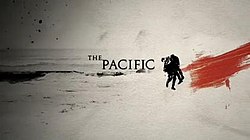

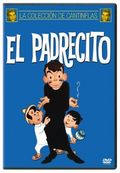


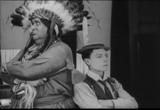
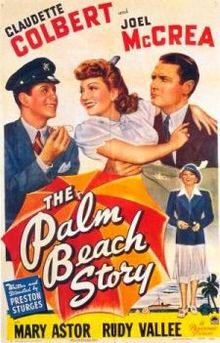
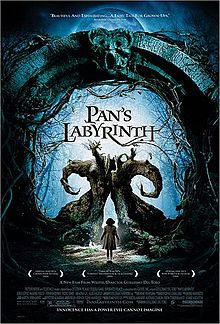
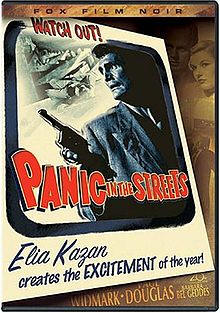

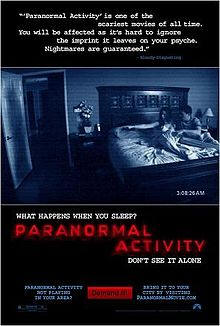
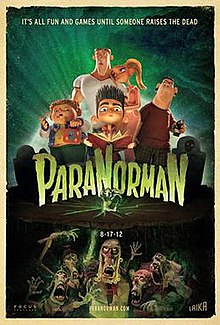
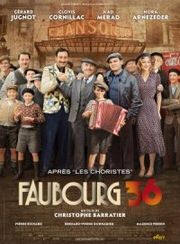
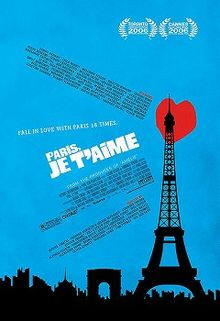

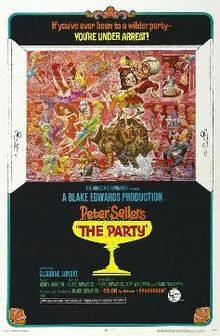

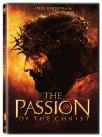
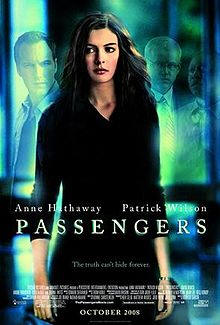
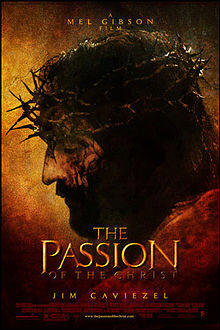

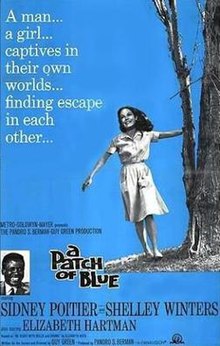

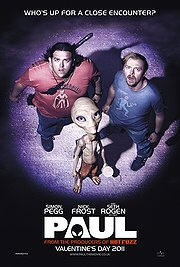


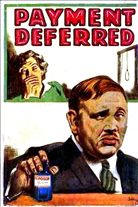
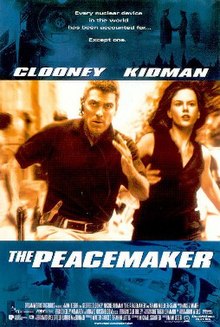

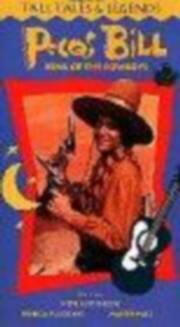
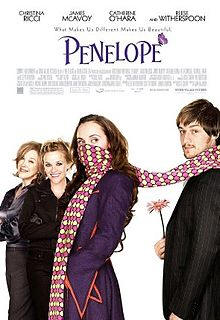



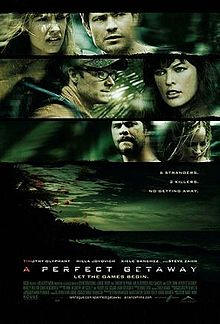


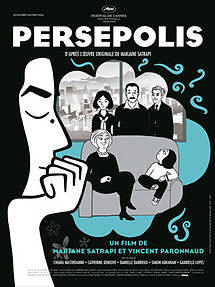
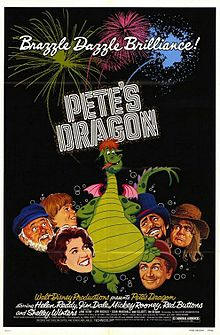
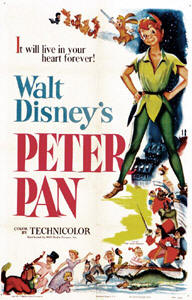

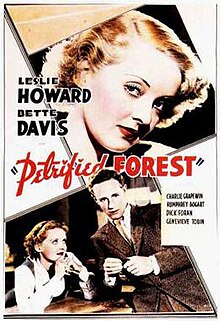


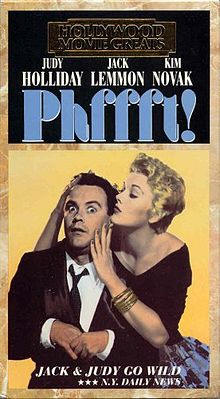


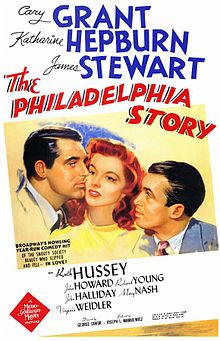





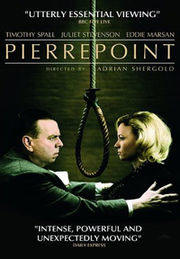


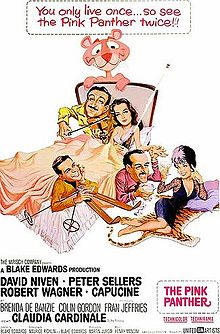
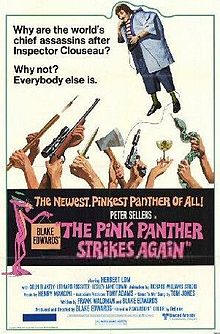
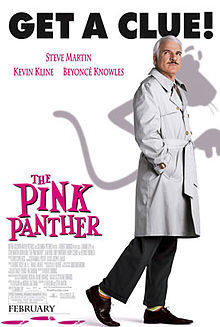
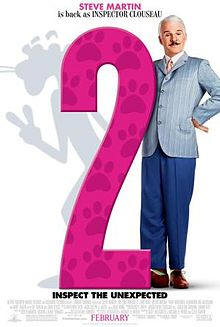

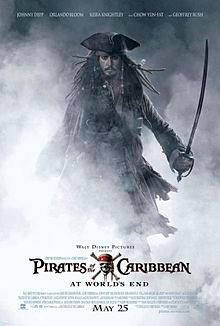

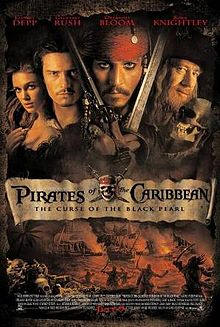

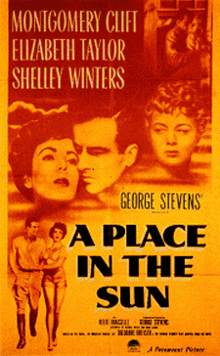
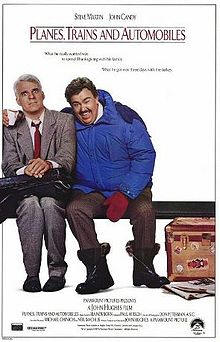


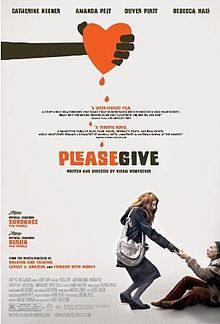
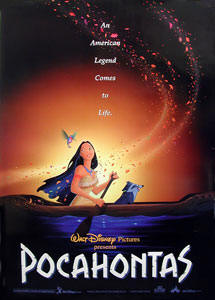


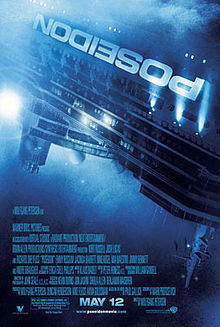

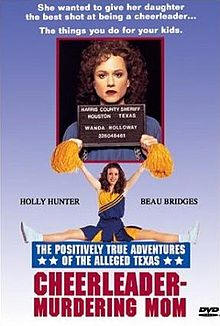



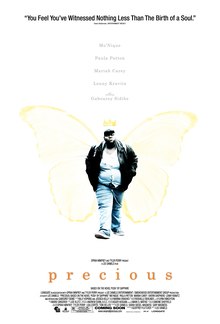
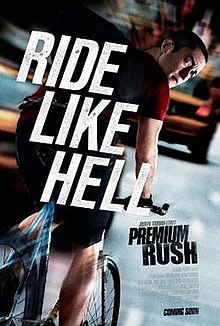
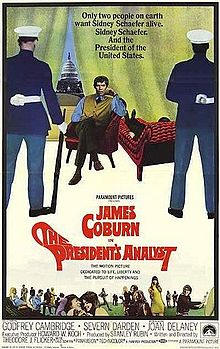
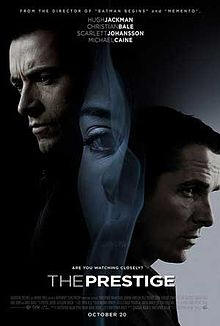
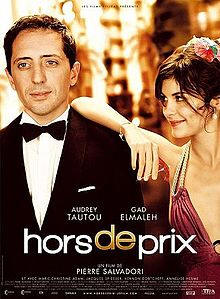
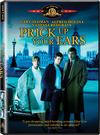

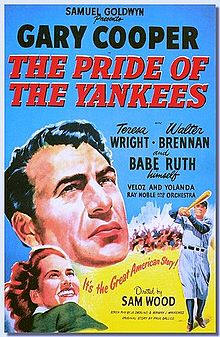
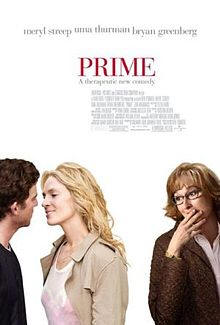


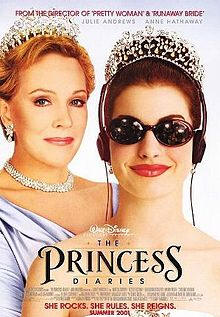
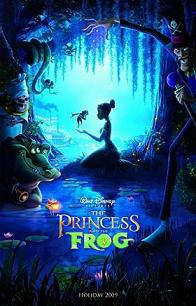

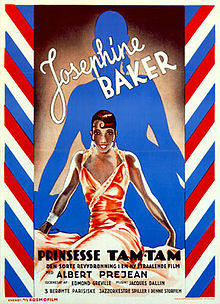

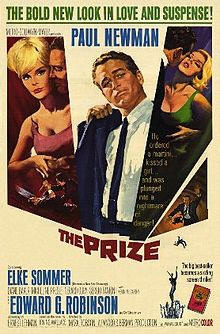



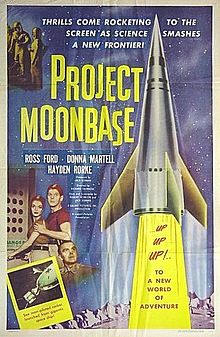


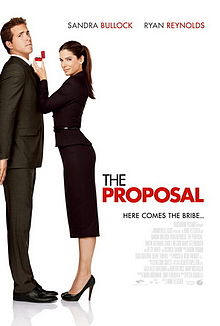





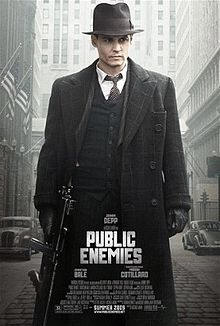

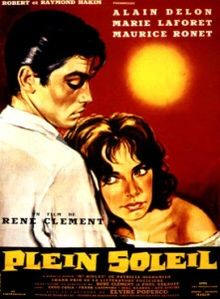

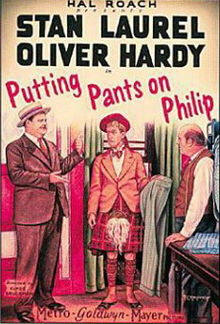
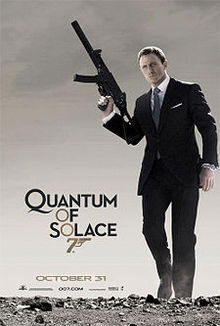
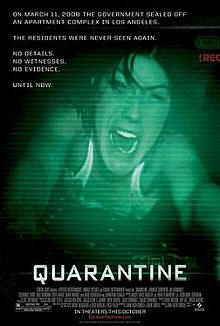
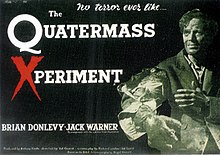


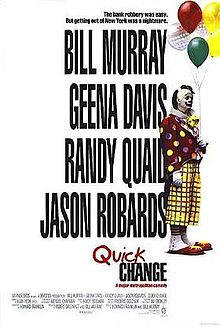


_01.jpg/220px-Poster_-_Quo_Vadis_(1951)_01.jpg)
